2023 in Review
No replays 😊
In order finished
In order finished
193 Games
👻 Hidden Kino 👻
Fun exercise in sussing out a game's mechanics with an impregnable language barrier. Immensely satisfying, even when the soundtrack is the screams of the Buggane.
Fun exercise in sussing out a game's mechanics with an impregnable language barrier. Immensely satisfying, even when the soundtrack is the screams of the Buggane.
Even cuter than the sequel. The focus on relatively small courses works surprisingly well, and made it all the funnier when a shot would get messed up.
Props to Doki Denki for making a children's party game so obtuse that two people in their mid-20s couldn't figure it out.
Operates wonderfully as the first Tetris Guideline title released in Japan. The Wonderswan's accommodation of a portrait layout means a greater play area relative to the screen, and thus a greater focus on the game itself. Compared to its contemporary, the GBA release of Tetris Worlds, it is leagues better in nearly every way. The particulars of the X and Y button pads makes every move feel deliberate when compared to the relatively inaccurate GBA D-pad. Even on Level 15, I felt in control of the field in a manner that felt incongruous with my expectations of the early 2000's handheld Tetris experience. Furthermore, Tetris on Wonderswan makes each square visibly distinct, as opposed to the featureless pieces of Tetris Worlds on GBA. That implementation of a functionally identical game come across as cheap and tawdry in nearly every way. The hold and next pieces therein seem an afterthought, here they are apparent and intentional. Even the soundtrack, bound to such an inferior chip on Wonderswan, is leagues better than the quiet frumpy GBA's meagre output.
Tetris on Wonderswan is exactly what I look for in a handheld Tetris experience, and it is a shame it never reached our shores.
A very rough introduction to Klonoa.
As an early WonderSwan title, and Namco's first game on the system, I admittedly didn't expect too much. The core platforming is passable, and the alteration of Klonoa's gameplay to fit a smaller-scale, action puzzle romp works surprisingly well (though I have no knowledge of what changes were actually made to that end). Getting the moonshards to finish each level is straight forward, with increasingly difficult puzzles required to get all the dream shards in a level for 100%.
There is an apparent attempt at replicating the graphical fidelity of the first PlayStation title, with the level/graphic designers assuring fans they worked hard to that end. Despite those efforts, the backgrounds blur together in such a way that, during actual play, the parallax effects are not noticed or registered even subconsciously. Foreground elements are detailed and make good use of the eight tones of grey, but their size on an already minuscule screen leads to a great deal of remembering level layouts, particularly when juggling crates across an entire section. One of the developers allegedly proposed shrinking Klonoa's (and presumably all other) sprites to accommodate the fact some levels were made for TATE play. Those TATE levels are an interesting feature in theory, but those stages rarely take advantage of that focus on verticality. If anything, they are more frustrating due to limited horizontal screen real estate mixed with lateral challenges.
The misunderstanding of the hardware continues with the sound. Afforded only four audio channels and a dreadfully tinny speaker, Hiromi Shibano and Junko Ozawa wanted to ensure Klonoa's iconic "Wahoo!" would be reproduced. It is a valiant effort on Ozawa's part in particular, with the digitised speech coming through fairly clearly, but the constant yelping detracts from the already stifled music and sound design as every possibly resource is thrown at Klonoa's voice. On top of that, what music can be heard is innocuous at first, but agonising when heard non-stop for all six stages of a world. And that is in an ideal scenario, wherein the player has access to the WonderSwan's headphone adapter accessory. The puny speaker has the potential to output genuinely good sound, but everything clashes harshly in Moonlight Museum.
From what I've read, the Game Boy Advance entries are a marked improvement. With a greater understanding of the WonderSwan's peculiarities following Namco's other releases on the platform (as well as the later addition of colour) there was considerable potential for Klonoa to be great on WonderSwan. However, he was given no second chance here, effectively using the WonderSwan as he would an enemy, discarding it to reach a higher level.
As an early WonderSwan title, and Namco's first game on the system, I admittedly didn't expect too much. The core platforming is passable, and the alteration of Klonoa's gameplay to fit a smaller-scale, action puzzle romp works surprisingly well (though I have no knowledge of what changes were actually made to that end). Getting the moonshards to finish each level is straight forward, with increasingly difficult puzzles required to get all the dream shards in a level for 100%.
There is an apparent attempt at replicating the graphical fidelity of the first PlayStation title, with the level/graphic designers assuring fans they worked hard to that end. Despite those efforts, the backgrounds blur together in such a way that, during actual play, the parallax effects are not noticed or registered even subconsciously. Foreground elements are detailed and make good use of the eight tones of grey, but their size on an already minuscule screen leads to a great deal of remembering level layouts, particularly when juggling crates across an entire section. One of the developers allegedly proposed shrinking Klonoa's (and presumably all other) sprites to accommodate the fact some levels were made for TATE play. Those TATE levels are an interesting feature in theory, but those stages rarely take advantage of that focus on verticality. If anything, they are more frustrating due to limited horizontal screen real estate mixed with lateral challenges.
The misunderstanding of the hardware continues with the sound. Afforded only four audio channels and a dreadfully tinny speaker, Hiromi Shibano and Junko Ozawa wanted to ensure Klonoa's iconic "Wahoo!" would be reproduced. It is a valiant effort on Ozawa's part in particular, with the digitised speech coming through fairly clearly, but the constant yelping detracts from the already stifled music and sound design as every possibly resource is thrown at Klonoa's voice. On top of that, what music can be heard is innocuous at first, but agonising when heard non-stop for all six stages of a world. And that is in an ideal scenario, wherein the player has access to the WonderSwan's headphone adapter accessory. The puny speaker has the potential to output genuinely good sound, but everything clashes harshly in Moonlight Museum.
From what I've read, the Game Boy Advance entries are a marked improvement. With a greater understanding of the WonderSwan's peculiarities following Namco's other releases on the platform (as well as the later addition of colour) there was considerable potential for Klonoa to be great on WonderSwan. However, he was given no second chance here, effectively using the WonderSwan as he would an enemy, discarding it to reach a higher level.
Astonished at how much I enjoyed this considering the disdain it has harboured from many whose opinions I hold in very high regard. Its eschewing of Sans-Serif Corpo committee-design in favour of a maximal exploration of bombastic and obtuse peculiarities from the aesthetic to the mechanical warms my heart. The sincerity on display strikes a chord of 'cringe' within me less because of its actual writing content, and more because it is a contemporary parallel to the endearing, honest, whimsical edgelordiness of video games past. Neon White is the Shadow the Hedgehog, The Bouncer, Vexx, Prince of Persia: Warrior Within, Bomberman Act Zero, Dante's Inferno, Jak II, BMX XXX of the 2020s in tone, spit and polished to a shine. It forgoes the failings of mid-2000s muddy and ruddiness, where landscapes and gameplay blended into green-brown smears, and proudly proclaims that games can be capital-C cool and fun as hell. Every skip is the descendant of Ulillillia's Spyro oddities. The soundtrack is the vague memories of Ape Escape and ChainDive, the vibe the immaculate remembrance of youth. It is Lovely Planet with accuracy replaced with speed, speed, speed.
Neon White is unabashedly itself, for good and for ill.
Neon White is unabashedly itself, for good and for ill.
I shoulda never smoke that shit now I'm at a surface of revolution generated by revolving a circle in three-dimensional space about an axis that is coplanar with the circle.
Quick and dirty fun in the vein of my first experience with Serious Sam. Last level is a bit of a ballache but so it goes.
Only has the player agency of SNKRX on the surface, quickly devolving into the same mindless fare of Vampire Survivors. While a tower defense by its very nature lets you eventually kick back and relax, something here feels even less engaging. By minute 10, my towers all get to level 3 and I can alt tab to do something else.
Overly complex and strict. And it sounds and looks like ass.
Too much game without being good of game. The amount of 'depth' would be admirable if it weren't overwhelming.
For my next trick, I'll make your interest disappear!
Immensely frustrating.
Immensely frustrating.
Fun and beautiful but the degree of memorisation required is a buzzkill.
Wonderful reduction of the Search Action genre to its actual barest element. The presence of usable items muddies it somewhat, however, as it requires an action beyond movement.
Thought at first the greater focus on movement above all else made it worse than the first title, but the lack of player action in interacting with the environment makes it considerably stronger as a core experience. A little overlong though since you need to revisit planets a lot. The added modes are certainly interesting if nothing else.
Like playing flOw if it were comprised of destrutturato IKEA symbology.
The optimism of the mid-2000s distilled through a Sony VAIO. Boundless, if a little self-limited and repetitious. Drives like a dream though.
It's literally just more Ridge Racers. The increased track and music variety is very welcome.
I sure wish I was playing actual Sonic Adventure right now. At least it's kinda fast?
Micro transient vignettes in a definitionally non-place? Yes please
A toothless introduction to the Playdate.
Cute little bunch 'o screensavers and minigames for the Playdate. Nothing spectacular but I think that's fine!
Outstanding as a showcase for Cosmo D's musical talents, ineffectual in every other regard. The Norwood Suite represents a turning point for Cosmo D's oeuvre towards commercialisation and an acceptability for the gaming masses. The wide-open amorphous slapdash spaces of Off-Peak have been cast aside in favour of regimented, interconnected spaces which ultimately refuse the possibility of wasted time and effort on the part of the player. That isn't to say that earning money for your labour is bad. Rather, there is a sense of sterility in presentation and experience.
Though Off-Peak allowed the player total freedom in their approach to collecting their ticket pieces, The Norwood Suite has a fairly prescriptive path in place for progression. Some items may be found off the beaten path, but the primary objective feels at times like railroading -- ironic given it was the previous game which featured trains. The widespread, warm reception of The Norwood Suite in comparison to the non-coverage of works of Oleander Garden, TIMEframe, or 0_abyssalSomewhere exemplifies my issue with the former; it is off-beat, 'outsider' art presented in a manner which is palatable to non-outsiders.
To pilfer the thoughts of our greatest mind, "Cosmo D reminds me of Mr Brainwash." Like Mr. Brainwash or Banksy, there feels to be a sort of appropriation of the work by those on the periphery of the core game/art world. Cosmo D's human are of malformed flesh less to make some grander point of bodily discomfort and dysmorphia, but to come across as too weird to be uncanny, too ordinary to be anything but human. This holds true throughout the experience, striking me less as the autonomy of the self as actualised in Second Life, and more like the interpretation of that digitised Other by one who exists as an observer, a trouble maker, a mocker. By way of example, The Norwood Suite is Griffin and Justin McElroy's intentional grotesqueries made for their corporate sponsored, lampooning of the Other in their Second Life Monster Factory videos. It is insincere. Superficially about something, but altogether hollow.
Though Off-Peak allowed the player total freedom in their approach to collecting their ticket pieces, The Norwood Suite has a fairly prescriptive path in place for progression. Some items may be found off the beaten path, but the primary objective feels at times like railroading -- ironic given it was the previous game which featured trains. The widespread, warm reception of The Norwood Suite in comparison to the non-coverage of works of Oleander Garden, TIMEframe, or 0_abyssalSomewhere exemplifies my issue with the former; it is off-beat, 'outsider' art presented in a manner which is palatable to non-outsiders.
To pilfer the thoughts of our greatest mind, "Cosmo D reminds me of Mr Brainwash." Like Mr. Brainwash or Banksy, there feels to be a sort of appropriation of the work by those on the periphery of the core game/art world. Cosmo D's human are of malformed flesh less to make some grander point of bodily discomfort and dysmorphia, but to come across as too weird to be uncanny, too ordinary to be anything but human. This holds true throughout the experience, striking me less as the autonomy of the self as actualised in Second Life, and more like the interpretation of that digitised Other by one who exists as an observer, a trouble maker, a mocker. By way of example, The Norwood Suite is Griffin and Justin McElroy's intentional grotesqueries made for their corporate sponsored, lampooning of the Other in their Second Life Monster Factory videos. It is insincere. Superficially about something, but altogether hollow.
I Shoulda Never Smoke That Shit Now Im At Peshay Studio Set (1996)
A genuinely lovely and methodical puzzle platformer that leans into abstraction without sacrificing its internal logic for the player's sake. Much the same as The Witness, Popol Maya, and even Clutter 1000, Venineth is entirely atextual, its ruleset deduced purely through play. Whereas those other titles can lead to frustration and walls when their logic is not understood, Venineth makes every effort to delicately railroad the player towards their objective. These enormous levels might seem incomprehensible in scale at first, but clever design and the nature of the respawn system ensures that progress is always made, never undone. Patience can certainly be worn down -- one segment near the end of the game had me wandering in one locale for over an hour because I had missed an object -- but the experience on the whole is meditative enough to encourage slowing down and thoughtfully considering what lay before you. And if the atmosphere itself does not suggest such a pace, your immeasurable momentum does.
Gameplay isn't where Venineth shines brightest. Its landscapes are undoubtedly the best I have seen in possibly any game. The dev team's Polish background is abundantly clear through sweeping vistas and reflective corridors that seem ripped straight from the mid-2000's demoscene. Impossible geometric hyperstructures float above eternal seas of clouds, cubes intersect in perpetuity, hexagonal prisms stretch like unceasing columns of basalt. Yet even as an Unreal Engine 4 title, this feels less like a tech-demo and more like a set of playable Bryce renders. There is a specificity to its textures and lighting that encapsulates a simultaneously horrifying and heart-warming liminality. The abutting of perfect cones, cubes, tori, and spheres against the natural world exacerbates this. It is a (post?/hyper?)mechanical imposition on places not our own. The only evidences of life are those geometries, the occasional fleshy nodule, rare flittering yellow wings in the sky. All the while, space ambient music is your steady companion, sometimes puncuated by DnB. The absence of tracker music is to Venineth's benefit, as its presence would no doubt make the illusion err on the side of nostalgiabaiting.
By no means for everyone, by all means for me.
A genuinely lovely and methodical puzzle platformer that leans into abstraction without sacrificing its internal logic for the player's sake. Much the same as The Witness, Popol Maya, and even Clutter 1000, Venineth is entirely atextual, its ruleset deduced purely through play. Whereas those other titles can lead to frustration and walls when their logic is not understood, Venineth makes every effort to delicately railroad the player towards their objective. These enormous levels might seem incomprehensible in scale at first, but clever design and the nature of the respawn system ensures that progress is always made, never undone. Patience can certainly be worn down -- one segment near the end of the game had me wandering in one locale for over an hour because I had missed an object -- but the experience on the whole is meditative enough to encourage slowing down and thoughtfully considering what lay before you. And if the atmosphere itself does not suggest such a pace, your immeasurable momentum does.
Gameplay isn't where Venineth shines brightest. Its landscapes are undoubtedly the best I have seen in possibly any game. The dev team's Polish background is abundantly clear through sweeping vistas and reflective corridors that seem ripped straight from the mid-2000's demoscene. Impossible geometric hyperstructures float above eternal seas of clouds, cubes intersect in perpetuity, hexagonal prisms stretch like unceasing columns of basalt. Yet even as an Unreal Engine 4 title, this feels less like a tech-demo and more like a set of playable Bryce renders. There is a specificity to its textures and lighting that encapsulates a simultaneously horrifying and heart-warming liminality. The abutting of perfect cones, cubes, tori, and spheres against the natural world exacerbates this. It is a (post?/hyper?)mechanical imposition on places not our own. The only evidences of life are those geometries, the occasional fleshy nodule, rare flittering yellow wings in the sky. All the while, space ambient music is your steady companion, sometimes puncuated by DnB. The absence of tracker music is to Venineth's benefit, as its presence would no doubt make the illusion err on the side of nostalgiabaiting.
By no means for everyone, by all means for me.
Short and sweet meditative experience that doesn't overstay its welcome. When the revelation of the UI's workings wear off, the realisation that the map contains so many secrets in such a small space feels fantastic. Though completing the last few objectives becomes an act of finding needles in haystacks, the undulating landscapes and swelling ambient soundtrack are more than enough to hold your attention. If I have any gripe, it is that some of the controls become irrelevant rather quickly, when they could have been better integrated into the primary puzzles. Still, that its 'ending' managed to widen my eyes and send me down my own rabbit hole is a feat unto itself. It effectively contextualised the gameplay in a manner not too dissimilar to Brenda Romero's Train, without feeling as though I had been tricked or made to feel ignorant.
Ridiculously cute but playing this was like melting a melatonin tablet.
Basic engine builder that doesn't overstay its welcome thanks to its short length.
It's a shame really, to have a game so tightly designed hidden behind subscriptions and convoluted menus. But damn if full speed tracks don't get the blood rushing.
While a bit on the easy side for all but one of its levels, Pick Pack Pup exemplifies the best approaches to Playdate game design. Bold outlines, varied shapes and textures, and clearly defined UI elements ensure no consternation, and in the off-chance the litany of items bleed into one, the custom item options keep things moving along swimmingly. The minor twists of gravity, shipping your matches, and unimpeded tile movement on the Bejeweled/Shariki formula leave things unique enough for Pick Pack Pup to stand on its own. The just tense enough gameplay, relaxing tunes, and artwork befitting of Susan Kare's contributions to General Magic's Magic Cap software or type foundry Emigre's illustrative typefaces make for a cohesive package that had me playing well after next week's games arrived.
PS: I can't believe I'm saying this, but Pick Pack Pup has the possibly best dog petting of any video game. It is never brought up during the game, it has no bearing on the game, it is arguably a hindrance, but the crank can be popped out and rotated to move your hand over the onscreen dog. There is a tactility and deliberate effort to this that elevates it above any other virtual animal touching.
PS: I can't believe I'm saying this, but Pick Pack Pup has the possibly best dog petting of any video game. It is never brought up during the game, it has no bearing on the game, it is arguably a hindrance, but the crank can be popped out and rotated to move your hand over the onscreen dog. There is a tactility and deliberate effort to this that elevates it above any other virtual animal touching.
Incredible Crisis reflects the unwavering confidence of games past. It is as difficult as it is, no more, no less. It controls as it does, simultaneously frictive and greased. It is without concession. If you want to save yourself from RSI and headache, buy a third party controller with a Turbo function. The absurdity of its premise is a thin layer of superglue binding together its constituent parts. That veneer of a mini-game compilation belies a series of primarily deterministic action-based tasks peppered with obtuse trivia questions and agonising maths homework. In theory, it should all come together to form a weak whole, yet a phenomenological indescribable something makes it greater than its parts, similar to Artdink's No One Can Stop Mr. Domino or Kaze no NOTAM.
It's that I keep thinking about America's Funniest Home Videos when I play it.
It's that I keep thinking about America's Funniest Home Videos when I play it.
Weird: Automaton
The only instance in Keita Takahashi's oeuvre of overt difficulty and challenge. Whereas stages in Katamari Damacy and We Love Katamari occasionally presented the player with moments that tested their skill and know-how -- primarily in the former's Ursa Major and Taurus levels, the latter's Cowbear request -- Crankin Presents Time Travel Adventure offers little of the toy-like reprieve found in Takahashi's other titles. This has no doubt caught most Playdate owners off-guard, particularly those who, like me, picked up a Playdate almost exclusively for a new digital Takahashi playground. What we received instead is a (literally) mechanically intense movement-based, animation-frame-dependent dodge-em-up featuring memorisation and routing like one would expect from Gradius, with the pixel perfect precision of I Want To Be The Guy in a coat of Wattam paint.
Here more than with any other Playdate title, the specifics of the crank must be appreciated. Like an electromechanical re-imagining of a well-oiled wooden crank toy, the rotation is smooth and defined with just enough resistance to keep it steady when not being turned. This is critical in Crankin Presents as it means each position of the crank at a point in time correlates exactly with a state in Crankin's timeline. Rotating the crank, say, exactly 476.2 degrees, then cranking it the other way 476.2 degrees back puts me in the exact same frame of animation, the same location I was in. This results in two layers of memorisation being demanded of the player.
On a macro level, many date's layouts must be roughly mentally mapped out to understand where hazards are, and where they can be avoided. On the micro level, each attempt's variations in where your cranking starts and ends, and the need for positioning Crankin in a specific point in time, means remembering roughly where he will be situated in relation to the physical crank. On some dates, this amounts to ensuring the crank starts in the same spot on each attempt to try and enact some semblance of actualised muscle memory. The advice of some to simply crank as quickly as possible and listen to sound cues to know when to slow down, generally works as well but tighter sequences still require specificity of movement. Needing to move to specific frames/times would be tedious with conventional controls, but the crank makes it exceedingly natural and easy to do. The physical act of speeding up or slowing down your cranking is a tremendous joy that promotes a oneness with Crankin.
Aesthetically, Crankin Presents is starkly contrasted against most other Playdate titles. Rather than black on white, everything is presented in white on black which is gorgeous. The high level of detail (or at least smoothness) means nothing reads as pixellated, but that avoidance of chunky pixels means hitboxes are exacting and occasionally unforgiving. This is most pronounced with Poopy-kun. Being so much smaller than most other hazards (and situated near the constant ambulation of Crankin's legs), this tiny guy represents one of the greatest headaches despite being my favourite character. The particles emanating from him are themselves part of the hitbox, but as singular pixels they are often difficult to see or understand where they are in relation to Crankin. Poopy-kun's exacting demands are not often the sole reason for failure, but he is nonetheless testament to the potential issues of favouring fidelity over clarity on the Playdate.
If the difficulty were not enough of a departure, the sound design also makes Crankin Presents stand out from Takahashi's gameography. There is no music, and the only sounds are your footsteps accompanied by pitch-shifting "One, two" chants, and the indicators of obstacles. Curiously, I think this is entirely to its benefit as a title on a pick-up-and-play device. While I lose something by not having the sound on, I don't lose everything like I would with Wattam or Katamari. For those titles their sound is perhaps less important for their gameplay, but so much more vital to their identity. I love the squeakiness of Crankin Presents, but I'm not getting a fundamentally lesser experience if I play in its absence.
The greatest joy of Crankin Presents is its surprises. Those 'A-ha!' moments of discovering how a specific animation can be used for a multitude of obstacles, or the realisation that supposedly superficial graphical pleasantries serve gameplay functions as well. Those feelings of thinking the game surely must be done only for there to be so many more dates. Those ever-present subversions of level expectations. And in true Keita Takahashi fashion, coming away from a 100% par-time completion realising there was no extrinsic reward for doing so, only a profound sense of self-satisfaction in taking this meticulously designed mechanical toy and figuring out how every part of it ticks. The Mechanical Turk has been dismantled only for me to realise how human it was all along.
The only instance in Keita Takahashi's oeuvre of overt difficulty and challenge. Whereas stages in Katamari Damacy and We Love Katamari occasionally presented the player with moments that tested their skill and know-how -- primarily in the former's Ursa Major and Taurus levels, the latter's Cowbear request -- Crankin Presents Time Travel Adventure offers little of the toy-like reprieve found in Takahashi's other titles. This has no doubt caught most Playdate owners off-guard, particularly those who, like me, picked up a Playdate almost exclusively for a new digital Takahashi playground. What we received instead is a (literally) mechanically intense movement-based, animation-frame-dependent dodge-em-up featuring memorisation and routing like one would expect from Gradius, with the pixel perfect precision of I Want To Be The Guy in a coat of Wattam paint.
Here more than with any other Playdate title, the specifics of the crank must be appreciated. Like an electromechanical re-imagining of a well-oiled wooden crank toy, the rotation is smooth and defined with just enough resistance to keep it steady when not being turned. This is critical in Crankin Presents as it means each position of the crank at a point in time correlates exactly with a state in Crankin's timeline. Rotating the crank, say, exactly 476.2 degrees, then cranking it the other way 476.2 degrees back puts me in the exact same frame of animation, the same location I was in. This results in two layers of memorisation being demanded of the player.
On a macro level, many date's layouts must be roughly mentally mapped out to understand where hazards are, and where they can be avoided. On the micro level, each attempt's variations in where your cranking starts and ends, and the need for positioning Crankin in a specific point in time, means remembering roughly where he will be situated in relation to the physical crank. On some dates, this amounts to ensuring the crank starts in the same spot on each attempt to try and enact some semblance of actualised muscle memory. The advice of some to simply crank as quickly as possible and listen to sound cues to know when to slow down, generally works as well but tighter sequences still require specificity of movement. Needing to move to specific frames/times would be tedious with conventional controls, but the crank makes it exceedingly natural and easy to do. The physical act of speeding up or slowing down your cranking is a tremendous joy that promotes a oneness with Crankin.
Aesthetically, Crankin Presents is starkly contrasted against most other Playdate titles. Rather than black on white, everything is presented in white on black which is gorgeous. The high level of detail (or at least smoothness) means nothing reads as pixellated, but that avoidance of chunky pixels means hitboxes are exacting and occasionally unforgiving. This is most pronounced with Poopy-kun. Being so much smaller than most other hazards (and situated near the constant ambulation of Crankin's legs), this tiny guy represents one of the greatest headaches despite being my favourite character. The particles emanating from him are themselves part of the hitbox, but as singular pixels they are often difficult to see or understand where they are in relation to Crankin. Poopy-kun's exacting demands are not often the sole reason for failure, but he is nonetheless testament to the potential issues of favouring fidelity over clarity on the Playdate.
If the difficulty were not enough of a departure, the sound design also makes Crankin Presents stand out from Takahashi's gameography. There is no music, and the only sounds are your footsteps accompanied by pitch-shifting "One, two" chants, and the indicators of obstacles. Curiously, I think this is entirely to its benefit as a title on a pick-up-and-play device. While I lose something by not having the sound on, I don't lose everything like I would with Wattam or Katamari. For those titles their sound is perhaps less important for their gameplay, but so much more vital to their identity. I love the squeakiness of Crankin Presents, but I'm not getting a fundamentally lesser experience if I play in its absence.
The greatest joy of Crankin Presents is its surprises. Those 'A-ha!' moments of discovering how a specific animation can be used for a multitude of obstacles, or the realisation that supposedly superficial graphical pleasantries serve gameplay functions as well. Those feelings of thinking the game surely must be done only for there to be so many more dates. Those ever-present subversions of level expectations. And in true Keita Takahashi fashion, coming away from a 100% par-time completion realising there was no extrinsic reward for doing so, only a profound sense of self-satisfaction in taking this meticulously designed mechanical toy and figuring out how every part of it ticks. The Mechanical Turk has been dismantled only for me to realise how human it was all along.
Greatest variety of doors in any game, and highlights the horrors of the only cassette deck in Paris belonging to some random lady in her car.
I like this game : )
I've loved Wilmot's Warehouse mostly from afar since it's release, occasionally picking it up for an hour until reaching around 100 items, getting overwhelmed, and shelving it again. Over the past few weeks, however, and after five years of my living space becoming increasingly chaotic (particularly throughout the pandemic), renovations have been underway and are almost complete. With more clothes than dresser space, more books than bookshelves would allow, and a collection of tchotchkes, bulky controllers, and piles on top of piles of things that my cat kept knocking over, reorganisation was crucial just as more storage was. Within that context of shuffling everything around, not simply moving it out and plopping it back in, Wilmot's Warehouse finally made sense.
The shuffle of the warehouse is ongoing as mental categories ebb and flow across artificial boundaries. A bottle of liquid goes from my medicine area to the science area to the food area to the liquids area back to the medicine area. A tent goes with outdoor paraphernalia on the side for temporary shelter (opposite my weather conditions), itself abutted against permanent structures, construction goods, and patterns. An influx of tree stumps upsets the spacing of all my botanical wares, so much so that I move them with other measurement iconography (tree rings show time, are they not the calendars of nature?).
Like the pillars cleared with my performance stars, those new vast storage spaces let me categorise my own collection. Books with books, sure, but with academic texts in a place of their own, art books elsewhere, historical tomes too receive a space, writing on games adjacent to other books but also physical games. Those, of course, are near my music CDs. My archival cases of X68000 print media and diskettes stay with texts on games because they too are referential works.
It sounds innocuous and almost childlike to describe this in such a way, but these spatial allocations are the product of manoeuvring things around other things for a fortnight. It approaches a completeness, but the few remaining things threaten to displace other things meaning a potential collapse of this established order of things. If necessary, I'll dedicate a weekend to my own stock take, laboriously but methodically getting everything back into its place. For now.
Every collection of things is ultimately a self-serving system of chaos teetering on the brink. Archives, libraries, stores, warehouses, attics, bookshelves, museums, landfills, mechanics, grocers, blogs, directories, transit systems. With my post-graduate studies in library and information science beginning in the autumn, I too will be a cog in the machine of sorting one of humanity's warehouses. Like Wilmot, I hope to have a smile on my face all the while. :^)
The shuffle of the warehouse is ongoing as mental categories ebb and flow across artificial boundaries. A bottle of liquid goes from my medicine area to the science area to the food area to the liquids area back to the medicine area. A tent goes with outdoor paraphernalia on the side for temporary shelter (opposite my weather conditions), itself abutted against permanent structures, construction goods, and patterns. An influx of tree stumps upsets the spacing of all my botanical wares, so much so that I move them with other measurement iconography (tree rings show time, are they not the calendars of nature?).
Like the pillars cleared with my performance stars, those new vast storage spaces let me categorise my own collection. Books with books, sure, but with academic texts in a place of their own, art books elsewhere, historical tomes too receive a space, writing on games adjacent to other books but also physical games. Those, of course, are near my music CDs. My archival cases of X68000 print media and diskettes stay with texts on games because they too are referential works.
It sounds innocuous and almost childlike to describe this in such a way, but these spatial allocations are the product of manoeuvring things around other things for a fortnight. It approaches a completeness, but the few remaining things threaten to displace other things meaning a potential collapse of this established order of things. If necessary, I'll dedicate a weekend to my own stock take, laboriously but methodically getting everything back into its place. For now.
Every collection of things is ultimately a self-serving system of chaos teetering on the brink. Archives, libraries, stores, warehouses, attics, bookshelves, museums, landfills, mechanics, grocers, blogs, directories, transit systems. With my post-graduate studies in library and information science beginning in the autumn, I too will be a cog in the machine of sorting one of humanity's warehouses. Like Wilmot, I hope to have a smile on my face all the while. :^)
The captivation of the early Steam indie landscape can never be understated. Before the arrival of Steam Greenlight, the walled garden meant a very select few titles graced the storefront now resplendent with asset flips and low-grade eroge. Renowned games like Project Zomboid didn’t even appear on the store at that time — it and other indie darlings relied on Google Checkout and Desura for distribution. So limited was the indie space on Steam that days, weeks could go by without a new title. In looking for what underground, offbeat goodness was permitted, users invariably came across AaaaaAAaaaAAAaaAAAAaAAAAA!!! - A Reckless Disregard for Gravity, the first title alphabetically on the store. In Dejobaan Games founder Ichiro Lambe’s words:
“A name should be interesting, memorable, and descriptive — a game about jumping off of a perfectly good building in a flimsy wingsuit should be exciting. We had plenty of other ideas. The working title was Low Altitude, and we considered a bunch of others:
Screaming and Falling
AaaAaaAaa!
Deploy Parachute for Hot Chicks
Jumping to Earth From Tall Buildings
Bridge. Antenna. Span. Earth.
Falling Toward Earth
Your Personal Crater
Free Fall
Don't Forget Your Parachute
Remember Your Parachute
Spicy Mountain Lion
Freedom, Free-Fall, Freedom
I Fell From a Building
A few of those were obviously thrown in as jokes. "Deploy Parachute for Hot Chicks" was a dig at the industry's obsession with boobs. Spicy Mountain Lion was my personal favorite non sequitur. But when our PR/Marketing dude, Leo saw the list, he poked his finger at "AaaAaaAaa!," and refused to let me adjourn the meeting until I agreed to go with that.”
Though also available from Direct2Drive, GamersGate, Impulse, and WildTangent, the one-two punch of Steam's self-imposed exclusivity coupled with an ostentatious title made AaaAaaAaa! an enticing proposition for a couple years. Its inclusion in The Potato Sack on April 1, 2011 made it (relatively) explode in notoriety over a year after its initial launch. A crucial part of the associated Portal 2 ARG, many players, myself included, snatched up the game at its steep -75% discount and got to work inflating the player count, seeking clues, and nabbing potatoes for the ultimate goal of releasing Portal 2 early. Ten days after The Potato Sack launched, player numbers remained as high as 4,253, a number which would never be even approached again. By June 27, 2011, concurrent players topped out at 624. A year later, only 13. Since mid-2014, AaaAaaAaa! has failed to reach double digits. It has become a footnote of a footnote, a stepping-stone towards the contemporary AA indie zeitgeist of Game Pass and publishers and safety.
AaaAaaAaa! is reckless, an emblem of a sliver of a fraction of time wherein indies were starting to get the recognition they deserved. The polish of contemporary indies is absurd, their development cycles arduous, their teams an enormity, publishing rights are snatched in an instant. [Finji co-owner Rebekah Saltsman in 2021 stated “Five years ago, I’m like, ‘Oh, I can make a game for a million dollars.’ And that was crazy then. And [now] I’m like, ‘I can’t make this for under four [million].”](https://www.inverse.com/input/gaming/tunic-publisher-says-indie-game-production-is-absurdly-expensive) By contrast, Dejobaan’s marketing budget for AaaAaaAaa! was $0. With assets that seemingly fell out of a wallet containing lint and a single fly, AaaAaaAaa! and its ilk prided themselves not on their graphical fidelity or scale, but singular ideas explored maximally within small packages. AaaAaaAaa! isn’t bursting at the seams with content, but it didn’t need to. Like Zineth or Voxeltron or Darwinia, the aim was to present something new that hadn’t been explored within the games space as a sort of proof of concept, an offer of what games can accomplish.
As an in-effect sacrificial lamb then, AaaAaaAaa! is easy to dismiss as unimportant, as belonging to its position as a footnote’s footnote, but in revisiting it (having realised the kids of today know nothing of this time beyond its winners, its Super Meat Boy and Minecraft and Limbo) I was surprised at how enjoyable it remains. The gameplay is little more than falling while grazing obstacles and responding to simple button prompts. It isn’t good to look at. Yet it kicks ass in all the right ways. This first-person adaptation of BASE jumping evokes concepts of bullet hell with its tight navigation of enclosed spaces, of racing games in its sheer velocity, of arcade high-score chasing as you go for one more kiss, one more score plate. It oozes with risk’s rewards. It is drenched in text as an accessory, taking its overlong title and applying it to every facet of the UI and gameplay experience. It contains small nothingburgers of video chaos as if it is some valid reward in its own right. Image macros bespeckle gray slabs of polygonery. It is balloonshop’s Oreo, sounding not even half good but it is good, really Most importantly, it doesn’t wear out its welcome in the slightest, being just long enough to explore itself fully without the pressures of content bloat on the player. It would be reiterated upon with its semi-sequel AaaaaAAaaaAAAaaAAAAaAAAAA!!! for the Awesome semi-reconstructed with its long abandoned half brother 1... 2... 3... KICK IT! (Drop That Beat Like an Ugly Baby), mobilised with AaaaaAAaaaAAAaaAAAAaAAAAA!!! (Force = Mass x Acceleration) and is apparently being revitalised with the upcoming AaaaaAAaaaAAAaaAAAAaAAAAA!!! (if it ever releases).
It would be irresponsible to act like Superflight, Steep, Rush, and even Just Cause 3 haven’t trounced AaaAaaAaa! in nearly every regard with their years of hindsight to work off of, their immeasurable polish, and astounding budgets, but AaaAaaAaa! did it without a shred of shame, staying true to Dejobaan’s obtuse philosophies of making games that raise an eyebrow for their names, premises, and gameplay. It doesn’t blow my gourd, but it doesn’t need to. It’s fun, and it sits at the top of my Steam library for eternity. Jumping off of it into thousands of other games as I scroll and scroll seems fitting, somehow. It’s like Dejobaan knew they would be pioneers on an ever-growing mountain that forever shifts its form. It is a stratum fondly remembered.
“A name should be interesting, memorable, and descriptive — a game about jumping off of a perfectly good building in a flimsy wingsuit should be exciting. We had plenty of other ideas. The working title was Low Altitude, and we considered a bunch of others:
Screaming and Falling
AaaAaaAaa!
Deploy Parachute for Hot Chicks
Jumping to Earth From Tall Buildings
Bridge. Antenna. Span. Earth.
Falling Toward Earth
Your Personal Crater
Free Fall
Don't Forget Your Parachute
Remember Your Parachute
Spicy Mountain Lion
Freedom, Free-Fall, Freedom
I Fell From a Building
A few of those were obviously thrown in as jokes. "Deploy Parachute for Hot Chicks" was a dig at the industry's obsession with boobs. Spicy Mountain Lion was my personal favorite non sequitur. But when our PR/Marketing dude, Leo saw the list, he poked his finger at "AaaAaaAaa!," and refused to let me adjourn the meeting until I agreed to go with that.”
Though also available from Direct2Drive, GamersGate, Impulse, and WildTangent, the one-two punch of Steam's self-imposed exclusivity coupled with an ostentatious title made AaaAaaAaa! an enticing proposition for a couple years. Its inclusion in The Potato Sack on April 1, 2011 made it (relatively) explode in notoriety over a year after its initial launch. A crucial part of the associated Portal 2 ARG, many players, myself included, snatched up the game at its steep -75% discount and got to work inflating the player count, seeking clues, and nabbing potatoes for the ultimate goal of releasing Portal 2 early. Ten days after The Potato Sack launched, player numbers remained as high as 4,253, a number which would never be even approached again. By June 27, 2011, concurrent players topped out at 624. A year later, only 13. Since mid-2014, AaaAaaAaa! has failed to reach double digits. It has become a footnote of a footnote, a stepping-stone towards the contemporary AA indie zeitgeist of Game Pass and publishers and safety.
AaaAaaAaa! is reckless, an emblem of a sliver of a fraction of time wherein indies were starting to get the recognition they deserved. The polish of contemporary indies is absurd, their development cycles arduous, their teams an enormity, publishing rights are snatched in an instant. [Finji co-owner Rebekah Saltsman in 2021 stated “Five years ago, I’m like, ‘Oh, I can make a game for a million dollars.’ And that was crazy then. And [now] I’m like, ‘I can’t make this for under four [million].”](https://www.inverse.com/input/gaming/tunic-publisher-says-indie-game-production-is-absurdly-expensive) By contrast, Dejobaan’s marketing budget for AaaAaaAaa! was $0. With assets that seemingly fell out of a wallet containing lint and a single fly, AaaAaaAaa! and its ilk prided themselves not on their graphical fidelity or scale, but singular ideas explored maximally within small packages. AaaAaaAaa! isn’t bursting at the seams with content, but it didn’t need to. Like Zineth or Voxeltron or Darwinia, the aim was to present something new that hadn’t been explored within the games space as a sort of proof of concept, an offer of what games can accomplish.
As an in-effect sacrificial lamb then, AaaAaaAaa! is easy to dismiss as unimportant, as belonging to its position as a footnote’s footnote, but in revisiting it (having realised the kids of today know nothing of this time beyond its winners, its Super Meat Boy and Minecraft and Limbo) I was surprised at how enjoyable it remains. The gameplay is little more than falling while grazing obstacles and responding to simple button prompts. It isn’t good to look at. Yet it kicks ass in all the right ways. This first-person adaptation of BASE jumping evokes concepts of bullet hell with its tight navigation of enclosed spaces, of racing games in its sheer velocity, of arcade high-score chasing as you go for one more kiss, one more score plate. It oozes with risk’s rewards. It is drenched in text as an accessory, taking its overlong title and applying it to every facet of the UI and gameplay experience. It contains small nothingburgers of video chaos as if it is some valid reward in its own right. Image macros bespeckle gray slabs of polygonery. It is balloonshop’s Oreo, sounding not even half good but it is good, really Most importantly, it doesn’t wear out its welcome in the slightest, being just long enough to explore itself fully without the pressures of content bloat on the player. It would be reiterated upon with its semi-sequel AaaaaAAaaaAAAaaAAAAaAAAAA!!! for the Awesome semi-reconstructed with its long abandoned half brother 1... 2... 3... KICK IT! (Drop That Beat Like an Ugly Baby), mobilised with AaaaaAAaaaAAAaaAAAAaAAAAA!!! (Force = Mass x Acceleration) and is apparently being revitalised with the upcoming AaaaaAAaaaAAAaaAAAAaAAAAA!!! (if it ever releases).
It would be irresponsible to act like Superflight, Steep, Rush, and even Just Cause 3 haven’t trounced AaaAaaAaa! in nearly every regard with their years of hindsight to work off of, their immeasurable polish, and astounding budgets, but AaaAaaAaa! did it without a shred of shame, staying true to Dejobaan’s obtuse philosophies of making games that raise an eyebrow for their names, premises, and gameplay. It doesn’t blow my gourd, but it doesn’t need to. It’s fun, and it sits at the top of my Steam library for eternity. Jumping off of it into thousands of other games as I scroll and scroll seems fitting, somehow. It’s like Dejobaan knew they would be pioneers on an ever-growing mountain that forever shifts its form. It is a stratum fondly remembered.
Inoffensive but suffers from far too little puzzle variety to warrant more than one playthrough.
Barely better than Tant-R, though having a puzzle that requires knowledge of kanji is a big buzzkill.
Speaking strictly on 'Around the World,' the game portion of 3D Atlas, this is horrifically weak. The information presented in its trivia questions can be gleaned from the main program's statistics and multimedia videos. For every vexillological vexation there comes a quandary about orchid imports for three periphery states. Be asked to identify a country from its capital, then identify another from a collage. It is altogether boring at best. Points are converted to miles, and every three questions you trade in your miles to select a destination in your quest to circumnavigate the globe. Efficient travel relies on deeper geographic knowledge, but outside multiplayer (which I didn't even know the 3DO supported) it hardly matters.
Where 3D Atlas shines is as an early multimedia font of encyclopedic knowledge. Physically manipulating the globe is not the topic of interest, but the supplementary videos, renders, and tools. Abound in 3D Atlas is Marshall McLuhan's notion of the global village, making the planet metaphorically smaller through easy access to international knowledge and peoples. Though this often presents itself here, as elsewhere, in the exacerbation of differences between the Western world and that of the Other, that global-mindedness was a reality throughout the 1990s. It is thereby unapologetic in its effective appropriation of signifiers of the Other, believing this uncritical presentation to be more egalitarian and human-focused. That is all to say, those depictions in 3D Atlas are, at best, anthropologically and ethnographically disingenuous, at worst, a reinforcement of prejudice. By way of example, Afghanistan's country profile speaks only of colonialism and the nation's global position as a centre of conflict. Panama's touches on Manuel Noriega, political turmoil, and the Panama Canal. Former Soviet states might have a sentence devoted to pre-modern histories, but would convince the unaware 'player' that Soviet history constitutes their totality. The image for each country is a postcard typically comprised of traditional garb, a natural feature, and a cultural construct.
Overhead city views demonstrate the novelty of satellite imagery at the tail end of the 20th century. That high resolution photography of major population centres had been taken by the USSR, now collapsed, is passed off as cute and interesting, as if the technology would not continue to be used for malicious purposes following the Cold War, as if Western nations were not documenting that and more. Prior to the explosion of Big Data, a couple cities from way up high was the most people might reasonably expect to see. In 2023, it is as droll as most consider Google Earth to be.
In keeping with the resurgence of environmentalism in the 1980s into the 1990s, the Reports section of 3D Atlas is devoted to the perhaps overly simplistic concerns of the era. Acid rain, nuclear energy, overpopulation, and ozone abut water usage, global warming, and oil pollution. The now known to be entirely too optimistic projections therein seem quaint today. Mention is repeatedly made of treaties and protocols aiming to reduce emissions and environmental harm that we know had no effect. Were that not heartbreaking enough on its own, timelapses are available to show the spread of oil from the Exxon Valdez spill (so minuscule next to Deepwater Horizon and Ixtoc 1). Antarctic and Arctic sea ice presentations suggest a static nature of their maximum and minimum extents for the decades preceding record lows. The hopeful messages underlying these reports inflicts tremendous hurt on me today.
3D Atlas is functionally useless for its intended use case nearly thirty years following its release. It is sluggish, limited in scope, dry, and outdated. As a snapshot of a particular worldview for a particular time, it is a relic, a single piece in a larger puzzle of multimedia scholastic utopianism that naively saw knowledge as positive power.
Where 3D Atlas shines is as an early multimedia font of encyclopedic knowledge. Physically manipulating the globe is not the topic of interest, but the supplementary videos, renders, and tools. Abound in 3D Atlas is Marshall McLuhan's notion of the global village, making the planet metaphorically smaller through easy access to international knowledge and peoples. Though this often presents itself here, as elsewhere, in the exacerbation of differences between the Western world and that of the Other, that global-mindedness was a reality throughout the 1990s. It is thereby unapologetic in its effective appropriation of signifiers of the Other, believing this uncritical presentation to be more egalitarian and human-focused. That is all to say, those depictions in 3D Atlas are, at best, anthropologically and ethnographically disingenuous, at worst, a reinforcement of prejudice. By way of example, Afghanistan's country profile speaks only of colonialism and the nation's global position as a centre of conflict. Panama's touches on Manuel Noriega, political turmoil, and the Panama Canal. Former Soviet states might have a sentence devoted to pre-modern histories, but would convince the unaware 'player' that Soviet history constitutes their totality. The image for each country is a postcard typically comprised of traditional garb, a natural feature, and a cultural construct.
Overhead city views demonstrate the novelty of satellite imagery at the tail end of the 20th century. That high resolution photography of major population centres had been taken by the USSR, now collapsed, is passed off as cute and interesting, as if the technology would not continue to be used for malicious purposes following the Cold War, as if Western nations were not documenting that and more. Prior to the explosion of Big Data, a couple cities from way up high was the most people might reasonably expect to see. In 2023, it is as droll as most consider Google Earth to be.
In keeping with the resurgence of environmentalism in the 1980s into the 1990s, the Reports section of 3D Atlas is devoted to the perhaps overly simplistic concerns of the era. Acid rain, nuclear energy, overpopulation, and ozone abut water usage, global warming, and oil pollution. The now known to be entirely too optimistic projections therein seem quaint today. Mention is repeatedly made of treaties and protocols aiming to reduce emissions and environmental harm that we know had no effect. Were that not heartbreaking enough on its own, timelapses are available to show the spread of oil from the Exxon Valdez spill (so minuscule next to Deepwater Horizon and Ixtoc 1). Antarctic and Arctic sea ice presentations suggest a static nature of their maximum and minimum extents for the decades preceding record lows. The hopeful messages underlying these reports inflicts tremendous hurt on me today.
3D Atlas is functionally useless for its intended use case nearly thirty years following its release. It is sluggish, limited in scope, dry, and outdated. As a snapshot of a particular worldview for a particular time, it is a relic, a single piece in a larger puzzle of multimedia scholastic utopianism that naively saw knowledge as positive power.
Unequivocally the best video game ever made, though that has to be cheating, right? After all, you wouldn’t say your Raspberry Pi loaded with ROMs is itself a video game. An official compilation already stretches the definition of a video game, much to the chagrin of any dweeb trying to weasel their way out of providing an actual list of their favourite games. Yet this unofficial potpourri does what a mere compilation cannot, what your ROM library fails at. Multibowl! puts these games on equal footing with one another, contextualises them, renders their objectives concrete, and synthesises them into a new, greater whole. It is the wet dream of the games historian, the archivist, the obscura-seeker, the high-score-chaser, the competitive gamer, the informed, the ignorant, and the creative.
Bennett Foddy and AP Thomson have unenviably plumbed the depths of numerous ROM sets to scrounge up treasures both noteworthy and forgotten, presenting them all as equals as games and micro-competitive arenas. Obvious mainstays of games history, Mario Bros., Gauntlet, Metal Slug, and NBA Jam operate as immediately recognisable artefacts with goals and control schema that are already familiar to many. However, they are just as likely to come up as titles which are not generally considered competitive and oppositional: Lemmings; Maze; Bonanza Bros. Though lacking internal mechanisms for confrontational gameplay, clever use of save states and memory analysis allow Multibowl! to check for some change in some variable to grant one player a point.
One of the greatest joys in Multibowl! is its deep cuts, its pulling up of games you have never heard of, the sort of title your eye skips over in your search for that SegaSonic Bros. ROM, titles bordering on the uncanny in their near-familiarity, games that make you quickly jot down their title out of befuddlement or glee. Games you would never reasonably play. In a vacuum of playing them on their own, those works might not hold your attention long enough to grasp their purpose or gameplay. Within the rapid pace of Multibowl!, within a framework of having no choice, they demand attention, dissection, and comprehension. The coercion for the players to stick with these titles for a mere thirty seconds acts as a microexposure to the realities of most of games history, namely the lack of anything else to do. When these games necessarily compete for your attention in backlogs and ROM sets with hundreds, if not thousands, of games, there is no reason for most players to approach an understanding of them. Why expose myself to the dregs of history when Pac-Man is right there?
A games historian, archivist, or obscura-seeker has some secondary goal for their play here, that of context and exposure. Someone like myself is not necessarily playing these for their worth as fun experiences, but to come away with a fuller understanding of games as a whole, games as a cultural expression, games as a reflection of a zeitgeist, games as escapism, games as political tools, games as violence, games as transgression, games as collaborative, games as competitive, games as more than just games. Games as a means, not an end.
Multibowl!’s real purpose is not as a game, at least not to me, but as some smörgåsbord of curatorial excellence, diversity, and inversion. It demonstrates how games have always been inventive and worthy of attention in some capacity, while still remaining semi-boundless in and of itself, conveying the unceasing work of history. Histories are forever rewritten for new contexts. The once irrelevant becomes critically important with changing tides. The once foundational becomes a historiographical assumption. With vast shifts in the goals of games histories, there will always be more to uncover, more to connect.
Here's to 1,000 more.
Bennett Foddy and AP Thomson have unenviably plumbed the depths of numerous ROM sets to scrounge up treasures both noteworthy and forgotten, presenting them all as equals as games and micro-competitive arenas. Obvious mainstays of games history, Mario Bros., Gauntlet, Metal Slug, and NBA Jam operate as immediately recognisable artefacts with goals and control schema that are already familiar to many. However, they are just as likely to come up as titles which are not generally considered competitive and oppositional: Lemmings; Maze; Bonanza Bros. Though lacking internal mechanisms for confrontational gameplay, clever use of save states and memory analysis allow Multibowl! to check for some change in some variable to grant one player a point.
One of the greatest joys in Multibowl! is its deep cuts, its pulling up of games you have never heard of, the sort of title your eye skips over in your search for that SegaSonic Bros. ROM, titles bordering on the uncanny in their near-familiarity, games that make you quickly jot down their title out of befuddlement or glee. Games you would never reasonably play. In a vacuum of playing them on their own, those works might not hold your attention long enough to grasp their purpose or gameplay. Within the rapid pace of Multibowl!, within a framework of having no choice, they demand attention, dissection, and comprehension. The coercion for the players to stick with these titles for a mere thirty seconds acts as a microexposure to the realities of most of games history, namely the lack of anything else to do. When these games necessarily compete for your attention in backlogs and ROM sets with hundreds, if not thousands, of games, there is no reason for most players to approach an understanding of them. Why expose myself to the dregs of history when Pac-Man is right there?
A games historian, archivist, or obscura-seeker has some secondary goal for their play here, that of context and exposure. Someone like myself is not necessarily playing these for their worth as fun experiences, but to come away with a fuller understanding of games as a whole, games as a cultural expression, games as a reflection of a zeitgeist, games as escapism, games as political tools, games as violence, games as transgression, games as collaborative, games as competitive, games as more than just games. Games as a means, not an end.
Multibowl!’s real purpose is not as a game, at least not to me, but as some smörgåsbord of curatorial excellence, diversity, and inversion. It demonstrates how games have always been inventive and worthy of attention in some capacity, while still remaining semi-boundless in and of itself, conveying the unceasing work of history. Histories are forever rewritten for new contexts. The once irrelevant becomes critically important with changing tides. The once foundational becomes a historiographical assumption. With vast shifts in the goals of games histories, there will always be more to uncover, more to connect.
Here's to 1,000 more.
While a DS port of the PS2 original was certain to be a mixed bag, it's still amazing how much this version of the game drops the ball. Every obstacle is dealt with by Cookie stepping on a button, and Cream doing an action on the touch screen or via the microphone. This leads to prolonged periods of Cookie standing still and having an enemy come after him to steal your time. Segmenting the game in this way would be fine, but without anything for Cookie to reasonably do, the player is left pacing awkwardly with one hand, tapping away with the other.
Either due to hardware limitations or its nature as a portable or because of the touchscreen implementation, levels are also much shorter and less dense than on PS2. There are fewer enemies and obstacles meaning many levels end before arriving at their meatiest parts. The Adventures of Cookie & Cream wasn't some exemplar of kishoutenketsu design like a modern Mario title, but there was still room for mechanics to flourish and interact more meaningfully than they can here.
Cookie & Cream never feels like the synthesis that the title implies, its two halves becoming as disparate as a tub of chocolate ice cream and one of vanilla placed next to each other in the freezer. Sure, they're together, but they have no bearing on each other. Even if it would betray some of the DS's appeal to get rid of the touchscreen functionality, a system closer to the PS2's single-player would work wonders, the left controls moving Cookie, the right, Cream. They could even have them remain on separate screens, perhaps eschew the big orange buttons and bring back the tangible object interaction? Or maybe I'm barking up the wrong tree, complaining about the single-player in a game meant for pairs, and I should just eat my deconstructed Oreos with a forced smile.
Either due to hardware limitations or its nature as a portable or because of the touchscreen implementation, levels are also much shorter and less dense than on PS2. There are fewer enemies and obstacles meaning many levels end before arriving at their meatiest parts. The Adventures of Cookie & Cream wasn't some exemplar of kishoutenketsu design like a modern Mario title, but there was still room for mechanics to flourish and interact more meaningfully than they can here.
Cookie & Cream never feels like the synthesis that the title implies, its two halves becoming as disparate as a tub of chocolate ice cream and one of vanilla placed next to each other in the freezer. Sure, they're together, but they have no bearing on each other. Even if it would betray some of the DS's appeal to get rid of the touchscreen functionality, a system closer to the PS2's single-player would work wonders, the left controls moving Cookie, the right, Cream. They could even have them remain on separate screens, perhaps eschew the big orange buttons and bring back the tangible object interaction? Or maybe I'm barking up the wrong tree, complaining about the single-player in a game meant for pairs, and I should just eat my deconstructed Oreos with a forced smile.
Sweet as sugar.
Sweet as young love.
Sweet as can be.
Nostalgic and enraptured with youth as Norwegian Wood.
Magical and intertwined as Kafka on the Shore.
Two blurred lines proceeding apace in parallel as 1Q84.
Perfectly self contained within its own narrative.
Abound with the peculiarities of children.
Spare and sparse.
Father's guidance.
Mother's embrace.
One's own destiny.
Comfortable.
Joyful.
Warm.
Sweet as young love.
Sweet as can be.
Nostalgic and enraptured with youth as Norwegian Wood.
Magical and intertwined as Kafka on the Shore.
Two blurred lines proceeding apace in parallel as 1Q84.
Perfectly self contained within its own narrative.
Abound with the peculiarities of children.
Spare and sparse.
Father's guidance.
Mother's embrace.
One's own destiny.
Comfortable.
Joyful.
Warm.
It's an intended experience, honest
I think I'm having a heart attack.
I think I'm blind.
None hit wonders.
I can't believe they put Subway Surfers in the middle of my FMV.
I have seen the light, and finally understand why the kids like Fortnite
Entirely too short and easy but it's gorgeous to look at and simply to play. I attracted filthy looks in a waiting room while playing this before a blood test.
Just as much not-a-roguelite as Hades but Returnal knows how to make that actually work for narrative and gameplay purposes.
Cute, short, and snap-snap-snappy with a utilisation of the crank that sets it apart from other crank-heavy titles like Crankin's Time Travel Adventure and A Balanced Brew. Whereas those games go for a one-to-oneness between physical movement and gameplay, Direct Drive brings momentum into the picture, leading to a looser style of play. This works stupendously in theory, but the low resistance of the crank, and relatively slow cranking involved, means what should feel like pedalling a bike or grinding coffee beans instead seems unresponsive at times. With generous room for error, however, that never becomes a problem prohibiting progress. Even the managers' requests and harsher timing penalties never make this frustrating or, frankly, challenging. I got three stars on every song on my first try, and only the singular diversion of calibrating the turntable gave me any difficulty.
But you know what? That's fine. I don't use my Playdate to feel frustrated, I use it as a short(er) diversion, a little amuse-bouche of what games can achieve. Purely as a game, Direct Drive could use improving. As a concept, it's great, and it put a smile on my face which is what I want from this little yellow doodad.
But you know what? That's fine. I don't use my Playdate to feel frustrated, I use it as a short(er) diversion, a little amuse-bouche of what games can achieve. Purely as a game, Direct Drive could use improving. As a concept, it's great, and it put a smile on my face which is what I want from this little yellow doodad.
This review is a sister piece to my review of 177. I recommend reading that first.
CW: Sexual assault. The four-letter ‘R-word’ is invoked repeatedly without censoring or obfuscation.
WHEN YOU CATCH A GIRL YOU MUST FIND RIGHT TIMING FOR MAXIMUM RESULT WHICH WILL BE SHOWN ON LOVE METER ACTION OF LOVE MAKING IS BY PUSH BUTTON. BEST TIMING WILL PRODUCE MOST ECSTATIC RESULTS ON FEMALE METER.
Lover Boy is functionally unremarkable, seemingly of as much import as Min Corp.’s Gumbo or Toaplan’s Pipi & Bibi’s. Unlike those games, however, Lover Boy is mired in obscurity, controversy, and a historiography that crumbles under scrutiny.
The gameplay is in line with other maze games of the early 1980s. The Lover Boy chases Lisa, Rosemarie, Linda, and Maria through a labyrinth while police officers and dogs track him. There are item pickups for points, and bottles of perfume which incense Lover Boy, boosting his speed dramatically. All the while, a rendition of the nursery rhyme しょうじょうじのたぬきばやし 「 Shoujouji no Tanukibayashi」 plays merrily. Getting near the girls causes them to run away while yelling HELP, touching them starts your digital assault. Like 177, the player tries to get their victim’s pleasure meter to top out before Lover Boy climaxes. Though 177 used directional inputs, Lover Boy simply has you tapping the button at a steady rhythm. Filling the LADY LOVE to the heart at the top has the women elate Oh~. Climaxing before she can has her yelling NO! and escaping, Lover Boy needing to chase her down again.
Though less explicitly stated in Lover Boy as compared to 177, we see the same rape myth being perpetuated, that of rape becoming a consensual sexual act should the victim reach orgasm. Since Lover Boy is an arcade game, designed to munch the yen of the aroused, there is no good ending to speak of here. The cycle continues in perpetuity until Lover Boy is put behind bars for good. This might suggest an inevitability to the rapist being caught and punished accordingly in due time, but the lives system inadvertently paints a picture wherein a sexual criminal is released and allowed to repeat their crimes with minimal repercussion. Lest we forget the harrowing injustice presented in 177’s manual, “even if he was prosecuted then, he would not be charged with a crime.” Capture is thus an inconvenience, nothing more.
In trying to find out more about Lover Boy, I came to find out it was cause for debate in the Deutscher Bundestag a year after its release. On March 26, 1984, parliamentary spokespersons for Die Grünen (The Greens) Marieluise Beck, Petra Kelly, and Otto Schily brought to the attention of the federal government the installation of light-gun games and Lover Boy in an arcade in Soest. Both were cited as potential violations of Section 131 of the Strafgesetzbuch (Criminal Code), stating therein the illegality of representations which glorified violence. Increasingly realistic depictions of humans as targets for violence, both physical and sexual, necessitated a re-evaluation of existing legislation which made no such effort to criminalise imagery which ‘violated human dignity.’
Sixteen days later, the Federal Government answered the concerns of Die Grünen. The government had come to understand Lover Boy was installed in locations besides Soest, with the understanding that the PCB had been presented by an Italian importer in 1983 at Internationalen Fachmesse für Unterhaltungs- und Warenautomaten (The International Trade Fair for Amusement and Vending Machines) in Frankfurt. The specific board in Soest which drew initial concerns was sourced from a distributor in Dortmund. A March 1984 arcade game trade journal advertised Lover Boy as suitable for children, and thirty-two machines ended up being sold in North Rhine-Westphalia alone, and it came to be understood that Automaten-Selbstkontrolle (ASK) had been presented with incomplete information by which to rate its content; the content was egregious enough to exclude Lover Boy from any rating, leading to the existing machines being purchased and destroyed. A draft law was proposed to the Bundestag, stipulating that games of a violent sort must be prohibited from public areas frequented by children, and postulating that perhaps violent games should be banned wholesale in Germany.
A year later, in April 1985, Section 131 of the Strafgeseztbuch was amended to prohibit representations of violence, rather than just those which glorified it. Additionally, depictions of the ‘violation of human dignity’ were criminalised as well. The ASK became a permanent institution, officially regulating an industry that had, up to that point, been self-regulated.
The ban in Germany is easy to trace, but time and again, it is stated in other reviews and retrospectives that Lover Boy was banned globally outside of Japan with zero evidence offered to support that claim. Searches for “Lover Boy” and “Global Corporation Tokyo” in the United States Congressional Record, Historical Debates of the Parliament of Canada, British Cabinet Papers, CommonLii, Italian Senate record, New York Times, Globe & Mail, all turned up nothing. The German Wikipedia page also makes no mention of Lover Boy being banned anywhere outside of Germany.
Outside of the Bundestag record, some of the only other concrete information about Lover Boy is that it was brought to market by the same company that made 1983’s JoinEm, a non-erotic maze game, released under the name Global Corporation. The pinout and DIP switch documentation included with the Lover Boy PCB had Lover Boy handwritten on them. Weirding the situation further, a seeming bootleg of Lover Boy was released in Spain under the name Triki Triki, changing the developer name to DDT Enterprise, editing the copyright date to 1993.-nicht-jugendfrei-und-nicht-in-Mame/page10) The trail ends there.
If I were to posit a guess, the majority of the inaccurate claims about Lover Boy stem from a single GameFAQs review by defunct user ‘TheSAMMIES’. They claim, erroneously, that Lover Boy:
- Deals with aspects of rape beyond the penetrative act
- Has been banned globally
- Has better gameplay than 177
- Is slang for a man who lures underage women into prostitution (the term is only used in that manner in Dutch)
- Depicts only underage women
- Displays female genitalia
- Has only one maze
- Is of dark comedic value
None of that is true whatsoever. Their spurious falsehoods are on display in their review of 177 as well, claiming falsely:
- 177 is the police code for rape (it is simply the section of the Japanese Criminal Code which criminalises rape)
- RapeLay tackles rape more tactfully
- 177’s rape scenes show plant life and the night sky (they actually occur in a black void)
- Has controls in its rape scenes for getting onto Kotoe, penetrating her, building up sexual stamina (you actually just gyrate, the graphics barely animating)
- That 177 received a remake called 171 wherein Hideo is replaced by a squid monster, Kotoe by a maid (I have found no evidence of such a game existing)
Whether these ideas are being born purely from their mind, some misinterpretation of the realities of history, or whatever else, this individual seems to have irreparably tarnished the known history of Lover Boy, leading to prolonged repetition of the same incorrect claims. If there were any evidence to back up those ideas, wouldn’t they have shown themselves? Does it matter? Nobody cares about this game, nobody knows about it, can we fault the few who have documented it for their inaccuracies?
Yes, because it makes determining the truth all the harder. Yes, because it puts the onus of honestly on those who come after the fact. Yes, because just as these games are harmful in their depictions, speaking of them falsely is just as much of a disservice to history.
CW: Sexual assault. The four-letter ‘R-word’ is invoked repeatedly without censoring or obfuscation.
WHEN YOU CATCH A GIRL YOU MUST FIND RIGHT TIMING FOR MAXIMUM RESULT WHICH WILL BE SHOWN ON LOVE METER ACTION OF LOVE MAKING IS BY PUSH BUTTON. BEST TIMING WILL PRODUCE MOST ECSTATIC RESULTS ON FEMALE METER.
Lover Boy is functionally unremarkable, seemingly of as much import as Min Corp.’s Gumbo or Toaplan’s Pipi & Bibi’s. Unlike those games, however, Lover Boy is mired in obscurity, controversy, and a historiography that crumbles under scrutiny.
The gameplay is in line with other maze games of the early 1980s. The Lover Boy chases Lisa, Rosemarie, Linda, and Maria through a labyrinth while police officers and dogs track him. There are item pickups for points, and bottles of perfume which incense Lover Boy, boosting his speed dramatically. All the while, a rendition of the nursery rhyme しょうじょうじのたぬきばやし 「 Shoujouji no Tanukibayashi」 plays merrily. Getting near the girls causes them to run away while yelling HELP, touching them starts your digital assault. Like 177, the player tries to get their victim’s pleasure meter to top out before Lover Boy climaxes. Though 177 used directional inputs, Lover Boy simply has you tapping the button at a steady rhythm. Filling the LADY LOVE to the heart at the top has the women elate Oh~. Climaxing before she can has her yelling NO! and escaping, Lover Boy needing to chase her down again.
Though less explicitly stated in Lover Boy as compared to 177, we see the same rape myth being perpetuated, that of rape becoming a consensual sexual act should the victim reach orgasm. Since Lover Boy is an arcade game, designed to munch the yen of the aroused, there is no good ending to speak of here. The cycle continues in perpetuity until Lover Boy is put behind bars for good. This might suggest an inevitability to the rapist being caught and punished accordingly in due time, but the lives system inadvertently paints a picture wherein a sexual criminal is released and allowed to repeat their crimes with minimal repercussion. Lest we forget the harrowing injustice presented in 177’s manual, “even if he was prosecuted then, he would not be charged with a crime.” Capture is thus an inconvenience, nothing more.
In trying to find out more about Lover Boy, I came to find out it was cause for debate in the Deutscher Bundestag a year after its release. On March 26, 1984, parliamentary spokespersons for Die Grünen (The Greens) Marieluise Beck, Petra Kelly, and Otto Schily brought to the attention of the federal government the installation of light-gun games and Lover Boy in an arcade in Soest. Both were cited as potential violations of Section 131 of the Strafgesetzbuch (Criminal Code), stating therein the illegality of representations which glorified violence. Increasingly realistic depictions of humans as targets for violence, both physical and sexual, necessitated a re-evaluation of existing legislation which made no such effort to criminalise imagery which ‘violated human dignity.’
Sixteen days later, the Federal Government answered the concerns of Die Grünen. The government had come to understand Lover Boy was installed in locations besides Soest, with the understanding that the PCB had been presented by an Italian importer in 1983 at Internationalen Fachmesse für Unterhaltungs- und Warenautomaten (The International Trade Fair for Amusement and Vending Machines) in Frankfurt. The specific board in Soest which drew initial concerns was sourced from a distributor in Dortmund. A March 1984 arcade game trade journal advertised Lover Boy as suitable for children, and thirty-two machines ended up being sold in North Rhine-Westphalia alone, and it came to be understood that Automaten-Selbstkontrolle (ASK) had been presented with incomplete information by which to rate its content; the content was egregious enough to exclude Lover Boy from any rating, leading to the existing machines being purchased and destroyed. A draft law was proposed to the Bundestag, stipulating that games of a violent sort must be prohibited from public areas frequented by children, and postulating that perhaps violent games should be banned wholesale in Germany.
A year later, in April 1985, Section 131 of the Strafgeseztbuch was amended to prohibit representations of violence, rather than just those which glorified it. Additionally, depictions of the ‘violation of human dignity’ were criminalised as well. The ASK became a permanent institution, officially regulating an industry that had, up to that point, been self-regulated.
The ban in Germany is easy to trace, but time and again, it is stated in other reviews and retrospectives that Lover Boy was banned globally outside of Japan with zero evidence offered to support that claim. Searches for “Lover Boy” and “Global Corporation Tokyo” in the United States Congressional Record, Historical Debates of the Parliament of Canada, British Cabinet Papers, CommonLii, Italian Senate record, New York Times, Globe & Mail, all turned up nothing. The German Wikipedia page also makes no mention of Lover Boy being banned anywhere outside of Germany.
Outside of the Bundestag record, some of the only other concrete information about Lover Boy is that it was brought to market by the same company that made 1983’s JoinEm, a non-erotic maze game, released under the name Global Corporation. The pinout and DIP switch documentation included with the Lover Boy PCB had Lover Boy handwritten on them. Weirding the situation further, a seeming bootleg of Lover Boy was released in Spain under the name Triki Triki, changing the developer name to DDT Enterprise, editing the copyright date to 1993.-nicht-jugendfrei-und-nicht-in-Mame/page10) The trail ends there.
If I were to posit a guess, the majority of the inaccurate claims about Lover Boy stem from a single GameFAQs review by defunct user ‘TheSAMMIES’. They claim, erroneously, that Lover Boy:
- Deals with aspects of rape beyond the penetrative act
- Has been banned globally
- Has better gameplay than 177
- Is slang for a man who lures underage women into prostitution (the term is only used in that manner in Dutch)
- Depicts only underage women
- Displays female genitalia
- Has only one maze
- Is of dark comedic value
None of that is true whatsoever. Their spurious falsehoods are on display in their review of 177 as well, claiming falsely:
- 177 is the police code for rape (it is simply the section of the Japanese Criminal Code which criminalises rape)
- RapeLay tackles rape more tactfully
- 177’s rape scenes show plant life and the night sky (they actually occur in a black void)
- Has controls in its rape scenes for getting onto Kotoe, penetrating her, building up sexual stamina (you actually just gyrate, the graphics barely animating)
- That 177 received a remake called 171 wherein Hideo is replaced by a squid monster, Kotoe by a maid (I have found no evidence of such a game existing)
Whether these ideas are being born purely from their mind, some misinterpretation of the realities of history, or whatever else, this individual seems to have irreparably tarnished the known history of Lover Boy, leading to prolonged repetition of the same incorrect claims. If there were any evidence to back up those ideas, wouldn’t they have shown themselves? Does it matter? Nobody cares about this game, nobody knows about it, can we fault the few who have documented it for their inaccuracies?
Yes, because it makes determining the truth all the harder. Yes, because it puts the onus of honestly on those who come after the fact. Yes, because just as these games are harmful in their depictions, speaking of them falsely is just as much of a disservice to history.
YoyoGames-core
If the last half-decade has demonstrated anything, it is that the terminally online rhetoric of post-ironic who-gives-a-shit is metastasising. Vine was a benign growth, TikTok a malignant tumour. The netizen-hive-mind-collective that 'solved' the Boston Bombing is directly responsible for the fashwave that is/has/does/will erode democracy. Your grandpa has FOMO and bought $GME to 💎🙌 to the moon and we're all gonna make it, gm, gn, and you're buying into my shitcoin so I can rugpull you because Blizzard nerfed Siphon Life during Obamna's first term. Video games and anime used to be so much better before this forced diversity bullshit ᴡʜᴀᴛ ᴛʜᴇ ꜰᴜᴄᴋ ᴀʀᴇ yᴏᴜ ꜱᴀyɪɴɢ ᴅᴏ yᴏᴜ ʜᴇᴀʀ ᴛʜᴇ ꜱʜɪᴛ ᴅʀɪʙʙʟɪɴɢ ᴏᴜᴛ ᴏꜰ yᴏᴜʀ ᴍᴏᴜᴛʜ yᴏᴜ ᴄʀᴇᴛɪɴ took away the possibility of me getting a tradwife with Abigail Shapiro's body and Marin Kitagawa's face while I [REDACTED] to Angela White after a month of semen retention and get those GAIN$$$$ because there's always a bigger fool and it sure as fuck isn't me and you just don't get this new meme and I'm being gangstalked and I haven't [As the owner of a LandNFT, you own your individual Metalverse patch and secure a permanently assigned place on the Met---
The Milennials are the new Boomers [GEN-X ERASURE] and even the Zoomers are coming of age and they've been inundated with information and bullshit bullshit bullshit so they're casting a mirror back at this fucked up world we've made for them in their own art but some people are trying to be cute and coy with it and you get a YIIK or a Neon Whitebut at least one of those was a good game even if it was still corpo-white-washed faux-sthetics. And your cute and coy attempts and being quirky fail to represent how angry you should be that you were born into this mess of a world because don't you know anger results in nothing? Why yes my favourite podcasts are My Brother, My Brother & Me, and The Adventure Zone, I love to choke down the fetid slurry that is the McElroys' toxic positivity of no bummers and horses and you're being force fed advertisements for fast food and you can't even open your eyes to realise it.
So when a game has the moxie to be viscerally angry, I have to take notice because that feels so genuine in the hyperrealistic world we inhabit. And Splatter is mad that the Internet has made us manipulative, lonely, nostalgic, deluded, greedy, and ultimately willing to harm others (or ourselves) for some gain, be it financial or spiritual or egotistical or chemical. This works where other games borne of the online mindset falter because this runs deep. Rat King Collective didn't disconnect to craft up some malformed half-simulacra that is outdated before it comes out. They never stopped being online, they didn't go for the here and now, they struck at the core of fourteen-year-old-me's identity. This isn't the cream of the crap, this is the dregs of a multitude of online cultures that you, yes, had to be there for. Or maybe you didn't. Does it matter? This goes deep enough that a missed referential quip refuses a reading of "oh this is one of those internet things I don't get," it simply recedes into the background, a cacophony of noise.
It isn't as if the gameplay is some marvel though. It's a spongy xoomer-shooter affair with hand guns and a Dark Souls Borne Ring dodge and commitment to the bit. A leaping enemy is gonna leap! Your dodge isn't going to give you i-frames but it'll get you out of the way and into a new harm's way. I'm not here for the gameplay anyways, it's a means to an end.
This is the video game equivalent of B.R. Yeager's Amygdalatropolis and I ravenously ate it up. Get mad. Wreck shit. Tear it all down. WORLD IS A FUCK
The Milennials are the new Boomers [GEN-X ERASURE] and even the Zoomers are coming of age and they've been inundated with information and bullshit bullshit bullshit so they're casting a mirror back at this fucked up world we've made for them in their own art but some people are trying to be cute and coy with it and you get a YIIK or a Neon White
So when a game has the moxie to be viscerally angry, I have to take notice because that feels so genuine in the hyperrealistic world we inhabit. And Splatter is mad that the Internet has made us manipulative, lonely, nostalgic, deluded, greedy, and ultimately willing to harm others (or ourselves) for some gain, be it financial or spiritual or egotistical or chemical. This works where other games borne of the online mindset falter because this runs deep. Rat King Collective didn't disconnect to craft up some malformed half-simulacra that is outdated before it comes out. They never stopped being online, they didn't go for the here and now, they struck at the core of fourteen-year-old-me's identity. This isn't the cream of the crap, this is the dregs of a multitude of online cultures that you, yes, had to be there for. Or maybe you didn't. Does it matter? This goes deep enough that a missed referential quip refuses a reading of "oh this is one of those internet things I don't get," it simply recedes into the background, a cacophony of noise.
It isn't as if the gameplay is some marvel though. It's a spongy xoomer-shooter affair with hand guns and a Dark Souls Borne Ring dodge and commitment to the bit. A leaping enemy is gonna leap! Your dodge isn't going to give you i-frames but it'll get you out of the way and into a new harm's way. I'm not here for the gameplay anyways, it's a means to an end.
This is the video game equivalent of B.R. Yeager's Amygdalatropolis and I ravenously ate it up. Get mad. Wreck shit. Tear it all down. WORLD IS A FUCK
The actual driving model is ghastly when cornering but the announcer sounds like Coach Z so all is forgiven.
Utterly fine, which is more than you can say for Sonic 1 and 2 on Game Gear.
With my teeth cut on the herculean likes of Castlevania: The Adventure and Geograph Seal, and without any deep-seated adoration for Super Mario Bros. it must come as little surprise I not only liked Super Mario Bros. Special, but outright loved it by the end. On a technical, graphical, audio, mechanical, and ludological level, SMBS is a whisper of a shadow of the Nintendo original. Despite the odds being stacked astronomically against them, however, the team at Hudson crafted something that becomes an earnest marvel. SMBS effectively parcels out the essence of SMB in single-screen microdoses of platforming not too dissimilar to Prince of Persia, N++, or Dizzy.
This limitation informed decision would fail utterly with the mechanics and physics of SMB, but SMBS' tweaks accommodate this well. With the exception of multi-screen jumps, each segment can stand on its own as a mini-level effectively disconnected from those surrounding it. In theory, this would be jarring and discordant. In practice, those self-contained bits and bobs ensure each challenge is approached from common ground under the assumption that the player might have zero momentum at the start. Both cautious and bold players benefit from this, the former is not punished for slowing down, the latter barely hindered by the transition between screens. With the peculiarities of the physics and controls, this seems outright necessary. Mario jumps like he's taking inspiration from Simon Belmont, his running stops if too many keyboard keys are pressed (ie. two), he has the inertia of a semi-truck loaded with tungsten. Getting a grip on this bizarro setup is an agony in itself, but a rewarding one when enormous chasms are eventually crossed without hesitation.
Also due to limitations is the inconsistent game speed. Playing at the default 4MHz clock speed of the Sharp X1, everything drips like pitch if Mario is Super and too many sprites are on screen (ie. two). If Mario is Small or absent from the screen, everything is entirely too fast, even by the standards of SMB. This drunken sway between two extremes is uncomfortable to listen too and uneven to play. However, it unintentionally presents the player a variety of ways with which to engage with the game. Should the player go Super or Fiery, the experience is slower but perhaps intended. Clearing enemies and obstacles makes the screens accelerate near their ends. If the player goes Super or Fiery and ensures they keep as many sprites on screen at once, the game slows further to allow greater precision in platforming on that screen. The safety net of not being Small Mario makes these two options the most lackadaisical. On the other hand, Small Mario makes the game run, if not fast, at least at a consistently higher speed. Jumps thereby become tighter, and Mario much more vulnerable. Clearing enemies and obstacles makes the screens accelerate near their ends, so a bold player can take their chances and double down on them to proceed as quickly as possible. On paper this is perhaps a meaningless choice, but in practice there arises a genuine balancing act of choosing whether or not to bother with power-ups, with clearing enemies, with going fast. By the end of my playthrough, I consistently stayed as Small Mario and threw caution to the wind, making for a tense but rewarding experience.
The (re-)introduction of enemies from Donkey Kong and Mario Bros. are icing on an absurd cake, their inclusion an anachronistic anomaly that presents just enough of a shift in player approach to be meaningful. Sidesteppers may serve an identical purpose to Spinies, but Fighterflies' hops, barrels' rolling, fireballs' outright immunity, and the imminent hazard of icicles all carve out niches of their own without being out of place.
Separately, every facet of Super Mario Bros. Special fails to cut the mustard. As a synthesis, it is remarkable. My victory genuinely felt like it had been hard won from some overwhelming force. The Geiger–Müller counter buzzing was a constant companion I grew fond of. The words of Princess Peach rang clear and true: "You cleared every world. You are the greatest player. Congraturations!" [sic]
I would never recommend anyone play Super Mario Bros. Special without the most open of minds, and even then I think most will get their fill by the time they clear World 1. Maybe I'm too sick in the head to interpret this as a 'bad' game. Maybe I'm to sick to see it as anything but amazing. Either way, its eight worlds sought to chew me up and spit me out. Instead, I prevailed.
This is not a Super Mario Bros. Special as the actual name suggests. The title screen and box make the true meaning subtly known. This is a Super Special Mario Bros. game.
This limitation informed decision would fail utterly with the mechanics and physics of SMB, but SMBS' tweaks accommodate this well. With the exception of multi-screen jumps, each segment can stand on its own as a mini-level effectively disconnected from those surrounding it. In theory, this would be jarring and discordant. In practice, those self-contained bits and bobs ensure each challenge is approached from common ground under the assumption that the player might have zero momentum at the start. Both cautious and bold players benefit from this, the former is not punished for slowing down, the latter barely hindered by the transition between screens. With the peculiarities of the physics and controls, this seems outright necessary. Mario jumps like he's taking inspiration from Simon Belmont, his running stops if too many keyboard keys are pressed (ie. two), he has the inertia of a semi-truck loaded with tungsten. Getting a grip on this bizarro setup is an agony in itself, but a rewarding one when enormous chasms are eventually crossed without hesitation.
Also due to limitations is the inconsistent game speed. Playing at the default 4MHz clock speed of the Sharp X1, everything drips like pitch if Mario is Super and too many sprites are on screen (ie. two). If Mario is Small or absent from the screen, everything is entirely too fast, even by the standards of SMB. This drunken sway between two extremes is uncomfortable to listen too and uneven to play. However, it unintentionally presents the player a variety of ways with which to engage with the game. Should the player go Super or Fiery, the experience is slower but perhaps intended. Clearing enemies and obstacles makes the screens accelerate near their ends. If the player goes Super or Fiery and ensures they keep as many sprites on screen at once, the game slows further to allow greater precision in platforming on that screen. The safety net of not being Small Mario makes these two options the most lackadaisical. On the other hand, Small Mario makes the game run, if not fast, at least at a consistently higher speed. Jumps thereby become tighter, and Mario much more vulnerable. Clearing enemies and obstacles makes the screens accelerate near their ends, so a bold player can take their chances and double down on them to proceed as quickly as possible. On paper this is perhaps a meaningless choice, but in practice there arises a genuine balancing act of choosing whether or not to bother with power-ups, with clearing enemies, with going fast. By the end of my playthrough, I consistently stayed as Small Mario and threw caution to the wind, making for a tense but rewarding experience.
The (re-)introduction of enemies from Donkey Kong and Mario Bros. are icing on an absurd cake, their inclusion an anachronistic anomaly that presents just enough of a shift in player approach to be meaningful. Sidesteppers may serve an identical purpose to Spinies, but Fighterflies' hops, barrels' rolling, fireballs' outright immunity, and the imminent hazard of icicles all carve out niches of their own without being out of place.
Separately, every facet of Super Mario Bros. Special fails to cut the mustard. As a synthesis, it is remarkable. My victory genuinely felt like it had been hard won from some overwhelming force. The Geiger–Müller counter buzzing was a constant companion I grew fond of. The words of Princess Peach rang clear and true: "You cleared every world. You are the greatest player. Congraturations!" [sic]
I would never recommend anyone play Super Mario Bros. Special without the most open of minds, and even then I think most will get their fill by the time they clear World 1. Maybe I'm too sick in the head to interpret this as a 'bad' game. Maybe I'm to sick to see it as anything but amazing. Either way, its eight worlds sought to chew me up and spit me out. Instead, I prevailed.
This is not a Super Mario Bros. Special as the actual name suggests. The title screen and box make the true meaning subtly known. This is a Super Special Mario Bros. game.
I gotta hand it to them, for a rudimentary typing game on primitive hardware, it conveys accurately how droll Johnny Hart's work is.
Get this man some help, he's been swinging a bat at the air for hours now. I don't think the ball thrower is even plugged in.
Semen inhibitors... OFF!
Inside every lobster is a man waiting to break out.
Choose from a wide cast of white people and the HH Gregg mascot if he was racist.
The pinnacle of post-Soviet collapse Western humour. Still as low down as the Marianas Trench.
Play with busted shaders to relive the eyestrain of the Virtual Boy.
Pretty good erotic pixel art under a tissue paper-thin veil of gameplay that is outclassed by nearly the entire X68000 library. You walk forward in a straight line, enemies spawn in abundance in front of and behind you, you punch or kick them, repeat until you get to a boss. The grotesque disfigurements of these putty women in the core game belie the print materials and slideshow rewards for beating a stage. Though ostensibly these are lesbian displays of lewdness, they cater to the male gaze with laser precision with both parties taking on stances of submission and presentation towards the camera.
Not that this a-phallic focus is of any surprise. Published under the Technopolis Soft label, a software imprint of Tokuma Shoten's Technopolis magazine, this material reflects the contents of this and other Japanese PC enthusiast magazines of the 80s and 90s. Whether it's Technopolis, POPCOM, LOGiN, these magazines and their ilk catered to an overwhelmingly male readership. Entire sections of these and other magazines were devoted to eroge, gravure photoshoots, and erotic manga. In Guerrière Lyewärd, as in Technopolis itself, lesbian imagery is not on display as a means of some liberation for repressed women loving women in Japan, but a fetishistic object for heterosexual consumption. These women are crazed nymphomaniacs in need of a satiation which never comes.
Pornography aside, this is one of the shallowest eroge I've ever played, both in terms of erotic content and the gameplay itself. I thought maybe it was a type-in game, or a pack-in from a Technopolis appendix. No! It physically released! It cost 6800円! That's around $110USD today! That's like $5 for every 'lewd' image, goddamn!!!
Not that this a-phallic focus is of any surprise. Published under the Technopolis Soft label, a software imprint of Tokuma Shoten's Technopolis magazine, this material reflects the contents of this and other Japanese PC enthusiast magazines of the 80s and 90s. Whether it's Technopolis, POPCOM, LOGiN, these magazines and their ilk catered to an overwhelmingly male readership. Entire sections of these and other magazines were devoted to eroge, gravure photoshoots, and erotic manga. In Guerrière Lyewärd, as in Technopolis itself, lesbian imagery is not on display as a means of some liberation for repressed women loving women in Japan, but a fetishistic object for heterosexual consumption. These women are crazed nymphomaniacs in need of a satiation which never comes.
Pornography aside, this is one of the shallowest eroge I've ever played, both in terms of erotic content and the gameplay itself. I thought maybe it was a type-in game, or a pack-in from a Technopolis appendix. No! It physically released! It cost 6800円! That's around $110USD today! That's like $5 for every 'lewd' image, goddamn!!!
After playing Geograph Seal on an underclocked emulator, the framerate makes me feel nothing.
Identity crisis.
The idea of Pac-Man having individual digits scares me as it should you.
Super cute and fun, successfully bridges the language gap, please don't tell me there is an English version.
Far and away the most egregiously misguided attempt at myth-making in games history. This isn't the worst game ever. It's not the weirdest game ever. It is not the 'first American produced visual novel.' Limited Run Games seems content to simply upend truth and provenance to push a valueless narrative. The 'so bad it's good' shtick serves only to lessen the importance of early multimedia CD-ROM software, and drenching it in WordArt and clip art imparts the notion that this digital heritage was low class, low brow, low effort, and altogether primitive.
This repackaging of an overlong workplace sexual harassment/rape joke is altogether uncomfortable at best. Further problematising this, accompanying merch is resplendent with Edward J. Fasulo's bare chest despite him seemingly wanting nothing to do with the project. We've got industry veterans and games historians talking up the importance of digital detritus alongside YouTubers and LRG employees, the latter making the former less credible. We've got a novelisation by Twitter 'comedian' Mike Drucker. We've got skate decks and body pillows and more heaps of plastic garbage for video game 'collectors' to shove on a dusty shelf next to their four colour variants of Jay and Silent Bob Mall Brawl on NES, cum-encrusted Shantae statue, and countless other bits of mass-produced waste that belongs in a landfill. Utterly shameful how we engage with the past.
---{Graphics}---
☑ You forget what reality is
☐ Beautiful
☐ Good
☐ Decent
☐ Bad
☐ Don‘t look too long at it
☐ MS-DOS
---{Gameplay}---
☑ Very good
☐ Good
☐ It‘s just gameplay
☐ Mehh
☐ Watch paint dry instead
☐ Just don't
---{Audio}---
☐ Eargasm
☐ Very good
☐ Good
☑ Not too bad
☐ Bad
☐ I'm now deaf
---{Audience}---
☑ Kids
☑ Teens
☐ Adults
☑ All
---{PC Requirements}---
☐ Check if you can run paint
☐ Potato
☐ Decent
☐ Fast
☐ Rich boi
☑ Ask NASA if they have a spare computer
---{Difficulity}---
☐ Just press 'W'
☐ Easy
☐ Significant brain usage
☐ Easy to learn / Hard to master
☐ Difficult
☑ Dark Souls
---{Grind}---
☐ Nothing to grind
☐ Only if u care about leaderboards/ranks
☐ Isnt necessary to progress
☐ Average grind level
☐ Too much grind
☑ You‘ll need a second life for grinding
---{Story}---
☐ No Story
☐ Some lore
☐ Average
☐ Good
☐ Lovely
☑ It‘ll replace your life
---{Game Time}---
☐ Long enough for a cup of coffee
☐ Short
☐ Average
☐ Long
☑ To infinity and beyond
---{Price}---
☑ It’s free!
☐ Worth the price
☐ If it's on sale
☐ If u have some spare money left
☐ Not recommended
☐ You could also just burn your money
---{Bugs}---
☐ Never heard of
☐ Minor bugs
☐ Can get annoying
☐ ARK: Survival Evolved
☑ Cyberpunk 2077
---{?/10}---
☐1
☐2
☐3
☐4
☐5
☐6
☐7
☐8
☐9
☑10
More like Action Lax, like Relaxing, like me in my bed, like me after playing this because it was sleepy.
Like your step-dad, this acts like it's as good as the real thing (Mad Dog McCree) but it only wears the same clothing as it.
An FMV game that emphasises a minimal amount of FMV content. The Laserdisc for it must have been itty bitty.
An unassuming bridge between past and future.
Paper is with us always, from birth to death.
The 3DO’s multimedia library is a largely bifurcated collective of (early) childhood edutainment software and adult only erotica. It is an often shocking contrast, the likes of Putt-Putt and Eigo de Go! occupying the same space as Immortal Desire or the aptly-titled Sex. It is a testament to the possibilities afforded to software developers during the multimedia boom of the early 1990s, CD-ROMs making the proliferation of minimal input, high-quality entertainment a reality for those too young to meaningfully engage with interactive software, and those too libidinous for anything but appeasement. This duality makes both extremes intriguing, and led me to gravitate towards Kero Kero Keroppi to Origami no Tabibito and its heart-achingly sweet cover art and premise. One of Sanrio’s cutest characters being taught how to do origami, something I did as a child and when starting university? Sign me up.
Understandably, given the very young audience, Keroppi and his friends are taught traditional, simple origami designs that teach the fundamentals of the craft. Keroppi’s designs are toy-like, including a jumping frog, paper popper, and traditional sumo wrestler. Keroleen’s are cute objects, being flowers, jewellery, and heart shaped stationery. The origami traveller teaches Ganta how to make animals, Kyorosuke to create practical objects like a tissue holder, boxes, and notebooks, and Noberun ‘mysterious’ geometric models and more complex designs befitting his friends’ categories.
Selecting a design shows a short animation of Keroppi and friends playing. Teru Teru gives the design a difficulty rating out of five, and Den Den is an ever-present adviser as the user goes through the design’s steps. The traveller helps out in video segments to demonstrate specific folds and methods. Each design is accompanied by a bonus interactive toy or clip from the Hello Kitty and Friends OVAs. It is altogether simple but effective as a tool for teaching and entertaining.
Paper is expression.
Paper craft is inextricable from childhood itself. Paper is cheap, plentiful, easy to work with, tidy, safe, and ultimately simple. Origami exemplifies the beauty of paper most clearly. It is free of embellishment and destruction. It is singular. It can be functional or aesthetic. It is as permanent and temporary as it needs to be. It represents a compounding of the care (or lack thereof) put into it. It is nearly ancient and incredibly contemporary. It is simple and boundlessly complex. It is flat and sculptural. It is childish and mature. Keroppi and his friends demonstrate this with aplomb. Origami is an expression of the self.
Like Keroppi, I dabbled in origami as a kid. I would make throwing stars of printer paper and mar them with staples and paperclips to give them heft. Cootie catchers were scrawled on. Jumping frogs cut for ease of creation. While entirely unintentional, this engagement with origami was a refusal of the art form itself by trying to make the paper into something it was not.
On the eve of entering university, I turned to origami again, crafting modular Sonobe models and simple animals. The discovery of contemporary origami by the likes of Gen Hagiwara, Jun Maekawa, and Hideo Komatsu gave me the drive to continue the craft further because of the possibilities in a single square of paper. As my first year of university drew to a close, I presented to my mom on her birthday a senbazuru I had been working on for the past eight months. She still has it hanging on the wall of her office. I folded cranes of all sizes and left them around campus for others to find and take, and though they would sometimes end up in the trash their intrinsic impermanence meant it never bothered me. It’s just paper after all. I made increasingly complex models to push my skills and try and impress a girl I liked. I got a cat and made her little paper doodads to bat about. I rather ironically got a crane permanently marked into my skin. And for whatever reason, I slowed down my craft and eventually stopped. A global pandemic began. My lone crane became surrounded by flowers. I sent parcels to my boyfriend and packed them with cranes I had folded long ago. The models I made that were strewn around my house were put away in drawers and bins, the senbazuru and some custom boxes I had made being the only concrete symbols of this years-long hobby of mine.
Paper is a constant.
What I adore most about Kero Kero Keroppi to Origami no Tabibito is that it brings a centuries old craft into the hypermodern age of multimedia. It could work just as well as a book or tape, but it takes advantage of this new medium to address the realities of a radically shifting world. Shortened attention spans are sated with visual stimuli. Origami as an expression of national, abstract culture is conveyed through materialistic, corporate culture to try and ensure the survival of the craft. It takes something so accessible it can be done with leaves and hides it behind the extreme cost barrier of a 3DO or FM Towns Marty. Most importantly, it presents these origami models as means to an expressive end beyond the purely aesthetic. It shows me what I was perhaps missing in my drive to make complex origami. I was missing the intrinsic fun of paper, of craft, of play.
Paper is with us always, from rebirth to death.
I began HRT in 2021. My flimsy paper birth certificate was marked by a gender I knew to be incorrect for a decade. In late 2022 I came out to my parents and underwent the legal hullabaloo necessary to fix the gender marker on my identification. The impermanent birth certificate was mailed off and destroyed. It was replaced by a polymer certificate. Paper that had been with me from birth saw me through to legal [rebirth/death].
I started Kero Kero Keroppi to Origami no Tabibito in the morning, sat at my desk in my underwear in a body radically different from the one I had when last I folded paper. A body that was new. I moved to the floor, and folded without the precision I once obsessed over. My imperfections compounded.
It was an expression of the self that was real. The sun broke through the clouds and was warm on my skin.
Paper is with us always, from birth to death.
The 3DO’s multimedia library is a largely bifurcated collective of (early) childhood edutainment software and adult only erotica. It is an often shocking contrast, the likes of Putt-Putt and Eigo de Go! occupying the same space as Immortal Desire or the aptly-titled Sex. It is a testament to the possibilities afforded to software developers during the multimedia boom of the early 1990s, CD-ROMs making the proliferation of minimal input, high-quality entertainment a reality for those too young to meaningfully engage with interactive software, and those too libidinous for anything but appeasement. This duality makes both extremes intriguing, and led me to gravitate towards Kero Kero Keroppi to Origami no Tabibito and its heart-achingly sweet cover art and premise. One of Sanrio’s cutest characters being taught how to do origami, something I did as a child and when starting university? Sign me up.
Understandably, given the very young audience, Keroppi and his friends are taught traditional, simple origami designs that teach the fundamentals of the craft. Keroppi’s designs are toy-like, including a jumping frog, paper popper, and traditional sumo wrestler. Keroleen’s are cute objects, being flowers, jewellery, and heart shaped stationery. The origami traveller teaches Ganta how to make animals, Kyorosuke to create practical objects like a tissue holder, boxes, and notebooks, and Noberun ‘mysterious’ geometric models and more complex designs befitting his friends’ categories.
Selecting a design shows a short animation of Keroppi and friends playing. Teru Teru gives the design a difficulty rating out of five, and Den Den is an ever-present adviser as the user goes through the design’s steps. The traveller helps out in video segments to demonstrate specific folds and methods. Each design is accompanied by a bonus interactive toy or clip from the Hello Kitty and Friends OVAs. It is altogether simple but effective as a tool for teaching and entertaining.
Paper is expression.
Paper craft is inextricable from childhood itself. Paper is cheap, plentiful, easy to work with, tidy, safe, and ultimately simple. Origami exemplifies the beauty of paper most clearly. It is free of embellishment and destruction. It is singular. It can be functional or aesthetic. It is as permanent and temporary as it needs to be. It represents a compounding of the care (or lack thereof) put into it. It is nearly ancient and incredibly contemporary. It is simple and boundlessly complex. It is flat and sculptural. It is childish and mature. Keroppi and his friends demonstrate this with aplomb. Origami is an expression of the self.
Like Keroppi, I dabbled in origami as a kid. I would make throwing stars of printer paper and mar them with staples and paperclips to give them heft. Cootie catchers were scrawled on. Jumping frogs cut for ease of creation. While entirely unintentional, this engagement with origami was a refusal of the art form itself by trying to make the paper into something it was not.
On the eve of entering university, I turned to origami again, crafting modular Sonobe models and simple animals. The discovery of contemporary origami by the likes of Gen Hagiwara, Jun Maekawa, and Hideo Komatsu gave me the drive to continue the craft further because of the possibilities in a single square of paper. As my first year of university drew to a close, I presented to my mom on her birthday a senbazuru I had been working on for the past eight months. She still has it hanging on the wall of her office. I folded cranes of all sizes and left them around campus for others to find and take, and though they would sometimes end up in the trash their intrinsic impermanence meant it never bothered me. It’s just paper after all. I made increasingly complex models to push my skills and try and impress a girl I liked. I got a cat and made her little paper doodads to bat about. I rather ironically got a crane permanently marked into my skin. And for whatever reason, I slowed down my craft and eventually stopped. A global pandemic began. My lone crane became surrounded by flowers. I sent parcels to my boyfriend and packed them with cranes I had folded long ago. The models I made that were strewn around my house were put away in drawers and bins, the senbazuru and some custom boxes I had made being the only concrete symbols of this years-long hobby of mine.
Paper is a constant.
What I adore most about Kero Kero Keroppi to Origami no Tabibito is that it brings a centuries old craft into the hypermodern age of multimedia. It could work just as well as a book or tape, but it takes advantage of this new medium to address the realities of a radically shifting world. Shortened attention spans are sated with visual stimuli. Origami as an expression of national, abstract culture is conveyed through materialistic, corporate culture to try and ensure the survival of the craft. It takes something so accessible it can be done with leaves and hides it behind the extreme cost barrier of a 3DO or FM Towns Marty. Most importantly, it presents these origami models as means to an expressive end beyond the purely aesthetic. It shows me what I was perhaps missing in my drive to make complex origami. I was missing the intrinsic fun of paper, of craft, of play.
Paper is with us always, from rebirth to death.
I began HRT in 2021. My flimsy paper birth certificate was marked by a gender I knew to be incorrect for a decade. In late 2022 I came out to my parents and underwent the legal hullabaloo necessary to fix the gender marker on my identification. The impermanent birth certificate was mailed off and destroyed. It was replaced by a polymer certificate. Paper that had been with me from birth saw me through to legal [rebirth/death].
I started Kero Kero Keroppi to Origami no Tabibito in the morning, sat at my desk in my underwear in a body radically different from the one I had when last I folded paper. A body that was new. I moved to the floor, and folded without the precision I once obsessed over. My imperfections compounded.
It was an expression of the self that was real. The sun broke through the clouds and was warm on my skin.
Utterly okay. Dusty water cup.
Surprisingly hectic for how chill the theming is. Fun! I enjoy that I can only blame myself.
I am obviously missing out by not having access to the real machine but damn, I can feel the waves in my chair!
Words cannot express how badly I wish I had seen one boob. I didn't even realise you could do a version of Qix without a boob in it.
Neato!
Small!
Why's Mario in there? Get 'im out!
How can I possibly go back after World of Warcraft Peggle.
Aggressively inoffensively average.
For when you really don't have Uno.
Even if it isn't, like, fun, it oozes so much charm and optimism and vision that I can't help but adore it.
Apparently you don't push the Whopper button, you put the Whopper in the Quizno's toaster and it falls out like manure.
Justifies the crank all on its own, a demonstration of how dexterity can actually be translated into video games beyond flicks of sticks.
Would benefit from having a pinball plunger as a controller.
A layered cocktail that needs some shaking and stirring of its components.
The process of learning a new roguelite is one that, with enough experience, boils down to determining what works with what. This goes doubly for an engine-builder where the composition of the engine is just as important as its execution. Your Isaacs and Gungeons can be finished with poor items and pure skill, but when constructing a deck the parts need to work in harmony.
Peglin wants to have it both ways with its appropriation of Peggle's adaptation of pachinko machines. Whereas Peggle largely removed the element of luck in all but name (the Zen Ball making it most apparent that this is a game of skill), Peglin has done away with the possibility of winning with skill. Everything is down to RNG in one way or another, and the worst part is that Peglin refuses to admit this to the player. In this sense, Peglin is no different from its pachinko machine grandfather, the specific tuning of the latter's pins betraying the simple proposition of getting a ball to its goal.
The crux of the issue is that the player has no way of changing their odds in a meaningful way. Like other engine-builders, you are presented a few random choices for what passive items or balls you want to take. After battle you can upgrade your orbs if you wish. While other engine-builder roguelites like Slay the Spire and Monster Train offer the choice of card for free, Peglin assigns a cost to this and grants shockingly few opportunities to remove balls from the deck. Each shop does let you remove one ball for a fee, but you're going to have to bounce your way over there and thus structure your play in service of those spare few chances.
Building an engine is itself troublesome due to the nature of play. For starters, balls can have their own gravity which is further affected by bouncy pegs, bombs, gravity wells, slime bubbles, and other hazards. On top of this, the ball does not necessarily go to where the pointer is -- Peggle's balls always went straight to the pointer. Coupled with a paltry shot preview, each shot is a skewed gamble, a vague gesture of intent that is rarely realised. The game's confusion status which rapidly rotates your aim might as well be on by default, the end result is nearly identical. Even ignoring the inefficacy of aiming, without a way to meaningfully affect your luck, you can end up with a build that shoots itself in the foot. Whether due to my own (un)luck of the game's internal weighting, nearly every run of mine has been focused on increasing non-critical damage to ludicrous levels. That feels fun, but it is made instantly worthless if my ball hits a crit modifier, my damage cut down tenfold if not more. With a proper ability to aim my shots that would be fine, I would simply aim away from my Achilles' heel, but a refreshing of the board, an errant moving peg, a black hole, any number of possibilities will ensure my ball is heading straight for the one thing I don't want to have happen. That does not feel like I played poorly, it feels like the rug was pulled out from under me.
Most damning of all is that Peglin lacks the aesthetic, dopaminergic je ne sais quoi that makes Peggle so ultra-satisfying. Hitting a peg is a flaccid act without whimsy, the visual feedback a nothingburger of a number, the audio presented as effective white noise. The labouriously slow traversal of the ball makes each shot a tedium, something the developers are clearly aware of as there is a prevalent fast forward button which can knock the speed up to 300%. I am never on the edge of my seat, gnawing my nails hoping my shot was planned correctly, that I will hit that last peg with my final shot, the world holding its breath. I never feel my aptitude increasing. I only feel my time is being wasted, just as Peglin's potential is.
The process of learning a new roguelite is one that, with enough experience, boils down to determining what works with what. This goes doubly for an engine-builder where the composition of the engine is just as important as its execution. Your Isaacs and Gungeons can be finished with poor items and pure skill, but when constructing a deck the parts need to work in harmony.
Peglin wants to have it both ways with its appropriation of Peggle's adaptation of pachinko machines. Whereas Peggle largely removed the element of luck in all but name (the Zen Ball making it most apparent that this is a game of skill), Peglin has done away with the possibility of winning with skill. Everything is down to RNG in one way or another, and the worst part is that Peglin refuses to admit this to the player. In this sense, Peglin is no different from its pachinko machine grandfather, the specific tuning of the latter's pins betraying the simple proposition of getting a ball to its goal.
The crux of the issue is that the player has no way of changing their odds in a meaningful way. Like other engine-builders, you are presented a few random choices for what passive items or balls you want to take. After battle you can upgrade your orbs if you wish. While other engine-builder roguelites like Slay the Spire and Monster Train offer the choice of card for free, Peglin assigns a cost to this and grants shockingly few opportunities to remove balls from the deck. Each shop does let you remove one ball for a fee, but you're going to have to bounce your way over there and thus structure your play in service of those spare few chances.
Building an engine is itself troublesome due to the nature of play. For starters, balls can have their own gravity which is further affected by bouncy pegs, bombs, gravity wells, slime bubbles, and other hazards. On top of this, the ball does not necessarily go to where the pointer is -- Peggle's balls always went straight to the pointer. Coupled with a paltry shot preview, each shot is a skewed gamble, a vague gesture of intent that is rarely realised. The game's confusion status which rapidly rotates your aim might as well be on by default, the end result is nearly identical. Even ignoring the inefficacy of aiming, without a way to meaningfully affect your luck, you can end up with a build that shoots itself in the foot. Whether due to my own (un)luck of the game's internal weighting, nearly every run of mine has been focused on increasing non-critical damage to ludicrous levels. That feels fun, but it is made instantly worthless if my ball hits a crit modifier, my damage cut down tenfold if not more. With a proper ability to aim my shots that would be fine, I would simply aim away from my Achilles' heel, but a refreshing of the board, an errant moving peg, a black hole, any number of possibilities will ensure my ball is heading straight for the one thing I don't want to have happen. That does not feel like I played poorly, it feels like the rug was pulled out from under me.
Most damning of all is that Peglin lacks the aesthetic, dopaminergic je ne sais quoi that makes Peggle so ultra-satisfying. Hitting a peg is a flaccid act without whimsy, the visual feedback a nothingburger of a number, the audio presented as effective white noise. The labouriously slow traversal of the ball makes each shot a tedium, something the developers are clearly aware of as there is a prevalent fast forward button which can knock the speed up to 300%. I am never on the edge of my seat, gnawing my nails hoping my shot was planned correctly, that I will hit that last peg with my final shot, the world holding its breath. I never feel my aptitude increasing. I only feel my time is being wasted, just as Peglin's potential is.
Might be cute if it came out in 2013.
A persistent theme in eroge with female playable characters is that player defeat leads to sex. This bifurcates the reward system of an eroge: one can achieve a mechanical victory or receive sexual satisfaction. In more difficult titles this trade-off makes sense, a loss is a stumbling block on the road to victory and the pains of that loss are lessened by arousal.
So why would you apply that logic to one of the hardest game genres to lose at?
As is typical for a Survivors-like, the power scaling in Glory & Miserable Survivors is astronomical, the player becoming nigh invincible with a few upgrades, every enemy crumbling to dust. The added layer of defending the left side of the screen on a small playing field adds a slight hiccup that is assuaged with a single item. Ignoring that item guarantees defeat, so the player effectively chooses if they want to lose or win. The road to victory is arduous and artificially inflated like other Survivors titles, though it is more nebulous than simply waiting out a thirty minute timer. Dropping your health below ~66% and ~33% has your clothes torn increasingly from the heaving avatar taking up the right side of the screen, but even that reward requires the player to go out of their way to get hit enough. With the slightest effort, the player will receive no overt sexual satisfaction. A successful run is sexless, ending with a static image. Paltry in comparison to the high quality animations that accompany a loss.
Even then, the defeat screen is only part of the sexual content available, the other half tucked away in the gallery. You get some story and voice as well as some CGs. That gallery is so divorced from the game itself that Glory & Miserable Survivors comes across as less of an eroge and more of a game with erotic content on the side.
That's probably for the best -- one of the worst parts of many eroge and nukige can be the tedium of gameplay between scenes. In those works, however, suffering through the game grants a lewd reward. Here, there is no impetus to play well unless you enjoy the gameplay itself. And the gameplay isn't even good! It lacks the dopaminergic audio tingles of Vampire Survivors and contains virtually zero strategy. The most effective build is one where you stack AoEs that fill the screen and then watch a YouTube video for thirty minutes while the bouncing in your peripheral vision makes your own chest ache.
Anyways, I found out about this because namako8982's art takes up the whole screen on Awoo Installer. I guess Switch piracy is a gateway drug to perversion. Just look up the CGs online. Or read a book or something.
So why would you apply that logic to one of the hardest game genres to lose at?
As is typical for a Survivors-like, the power scaling in Glory & Miserable Survivors is astronomical, the player becoming nigh invincible with a few upgrades, every enemy crumbling to dust. The added layer of defending the left side of the screen on a small playing field adds a slight hiccup that is assuaged with a single item. Ignoring that item guarantees defeat, so the player effectively chooses if they want to lose or win. The road to victory is arduous and artificially inflated like other Survivors titles, though it is more nebulous than simply waiting out a thirty minute timer. Dropping your health below ~66% and ~33% has your clothes torn increasingly from the heaving avatar taking up the right side of the screen, but even that reward requires the player to go out of their way to get hit enough. With the slightest effort, the player will receive no overt sexual satisfaction. A successful run is sexless, ending with a static image. Paltry in comparison to the high quality animations that accompany a loss.
Even then, the defeat screen is only part of the sexual content available, the other half tucked away in the gallery. You get some story and voice as well as some CGs. That gallery is so divorced from the game itself that Glory & Miserable Survivors comes across as less of an eroge and more of a game with erotic content on the side.
That's probably for the best -- one of the worst parts of many eroge and nukige can be the tedium of gameplay between scenes. In those works, however, suffering through the game grants a lewd reward. Here, there is no impetus to play well unless you enjoy the gameplay itself. And the gameplay isn't even good! It lacks the dopaminergic audio tingles of Vampire Survivors and contains virtually zero strategy. The most effective build is one where you stack AoEs that fill the screen and then watch a YouTube video for thirty minutes while the bouncing in your peripheral vision makes your own chest ache.
Anyways, I found out about this because namako8982's art takes up the whole screen on Awoo Installer. I guess Switch piracy is a gateway drug to perversion. Just look up the CGs online. Or read a book or something.
Extant.
I don't know about this Yoshitaka Amano guy.
The only thing worse than having to stream Dennis Miller: That's Geek to Me for friends is realising you're going to have to play it all again in silence to make the first longplay of it.
Near ground zero at Hiroshima is a peace museum, housed in what was once Fukuromachi Elementary School. One concrete wall of the school remained standing after the bombing, charred black from flame. Hibakusha etched messages on the wall, searching for missing friends and family and letting others know they were alive. Set up as one of nineteen aid stations within 500 metres of the detonation, it was a locus for the injured and their networks.
"Please Yuko, tell me where you are, from your mom"
The messages were documented by the Ministry of Education in October 1945, but repairs to the school obfuscated these messages from spring 1946 until 1999. Deteriorating architecture served as an opportunity to see if the messages remained after all this time. Behind plaster and blackboards, the messages indeed remained. For some, it brought closure as an assurance from five decades prior that a relative had lived, fallen ill, or died. The school was reopened as a museum in 2002, the remnants of the past subsumed into the architecture itself, a stark abutment of a grim reality within halls that otherwise seem ordinary. A temporary measure to reach out to others is now made permanent, a concrete symbol of the collective memory of Hiroshima.
The late Jean-Luc Vilmouth unveiled his "Café Little Boy" at the group exhibition "Hiroshima Art Document 2002," held in the Hiroshima Branch of the former Bank of Japan, one of the only buildings untouched by the bombing. Three walls of a room were coated in green chalkboard paint, as were small stools and tables. The space is interrupted by photographs of Little Boy's damage on one wall, and a single unmarred analogue clock on another. Coloured chalk litters the floor, and the five visitors permitted inside at a time are encouraged to leave messages, scrawling over or erasing others if needed. After a short time, they are to leave, and the cycle continues.
Vilmouth's work, now part of the Contemporary collection of the Centre Pompidou, creates a participatory narrative wherein collective memory is continually rewritten, added to, and taken away. Without any degree of permanence, many (including myself) take to writing their innermost secrets on the surfaces, certain that they will disappear. Even if they remain forever, they become anonymised by virtue of how much information there is. Like Fukuromachi's wall, there is no expectation for this history to persist beyond that brief interaction.
Dear Future takes this construction of collective memory and digitises it. The participant is given a camera and has twenty minutes to explore a procedurally-generated world in the wake of collapse. Buildings seem shelled, literal Greco-Roman ruins litter the landscape, scant remnants of the human struggle to survive remain in the form of mattresses and vehicles. A journal documents the rise and fall and revival of an autarchy. Errant ghosts share their brief thoughts when photographed. When the sun sets, the game ends.
SELECT A MEMORY TO PASS ON
ALL OTHER MEMORIES WILL BE LOST TO TIME
Only one of the participant's photographs is allowed to persist. Future participants have access to this (and others') single image, otherwise the entirety of one's participation has no record. All traces are permanently erased. A participant can aid the reconstruction of a wider narrative by imparting a meaningful visual text, or a participant can leave behind an aesthetically pleasing image. A participant can even leave behind a shitty picture of a garbage pile. This is an anonymous act. It gives the participant no benefit to be helpful to others, nor a penalty for refusing progress.
The participant does have one other tool in their arsenal to pass on their heritage. They can leave a note at a location, constructed from pre-defined parts.
They, and the photographs, tell us not of the whereabouts of the participants, those who chronicle the past in the present for the future.
They bring a closure, an assurance that we were once here.
"Please Yuko, tell me where you are, from your mom"
The messages were documented by the Ministry of Education in October 1945, but repairs to the school obfuscated these messages from spring 1946 until 1999. Deteriorating architecture served as an opportunity to see if the messages remained after all this time. Behind plaster and blackboards, the messages indeed remained. For some, it brought closure as an assurance from five decades prior that a relative had lived, fallen ill, or died. The school was reopened as a museum in 2002, the remnants of the past subsumed into the architecture itself, a stark abutment of a grim reality within halls that otherwise seem ordinary. A temporary measure to reach out to others is now made permanent, a concrete symbol of the collective memory of Hiroshima.
The late Jean-Luc Vilmouth unveiled his "Café Little Boy" at the group exhibition "Hiroshima Art Document 2002," held in the Hiroshima Branch of the former Bank of Japan, one of the only buildings untouched by the bombing. Three walls of a room were coated in green chalkboard paint, as were small stools and tables. The space is interrupted by photographs of Little Boy's damage on one wall, and a single unmarred analogue clock on another. Coloured chalk litters the floor, and the five visitors permitted inside at a time are encouraged to leave messages, scrawling over or erasing others if needed. After a short time, they are to leave, and the cycle continues.
Vilmouth's work, now part of the Contemporary collection of the Centre Pompidou, creates a participatory narrative wherein collective memory is continually rewritten, added to, and taken away. Without any degree of permanence, many (including myself) take to writing their innermost secrets on the surfaces, certain that they will disappear. Even if they remain forever, they become anonymised by virtue of how much information there is. Like Fukuromachi's wall, there is no expectation for this history to persist beyond that brief interaction.
Dear Future takes this construction of collective memory and digitises it. The participant is given a camera and has twenty minutes to explore a procedurally-generated world in the wake of collapse. Buildings seem shelled, literal Greco-Roman ruins litter the landscape, scant remnants of the human struggle to survive remain in the form of mattresses and vehicles. A journal documents the rise and fall and revival of an autarchy. Errant ghosts share their brief thoughts when photographed. When the sun sets, the game ends.
SELECT A MEMORY TO PASS ON
ALL OTHER MEMORIES WILL BE LOST TO TIME
Only one of the participant's photographs is allowed to persist. Future participants have access to this (and others') single image, otherwise the entirety of one's participation has no record. All traces are permanently erased. A participant can aid the reconstruction of a wider narrative by imparting a meaningful visual text, or a participant can leave behind an aesthetically pleasing image. A participant can even leave behind a shitty picture of a garbage pile. This is an anonymous act. It gives the participant no benefit to be helpful to others, nor a penalty for refusing progress.
The participant does have one other tool in their arsenal to pass on their heritage. They can leave a note at a location, constructed from pre-defined parts.
They, and the photographs, tell us not of the whereabouts of the participants, those who chronicle the past in the present for the future.
They bring a closure, an assurance that we were once here.
In my previous review of Cook, Serve, Delicious?! 3, I closed things out saying that "David Galindo hopefully hasn't peaked with this entry, but if he has it's a magnificent apex." Early showings of Cook Serve Forever made me incredibly anxious that the pinnacle of this microgenre had already reached its logical conclusion, but I'm starting to see that it can't be reduced to hills and valleys.
CSF is inextricable from its CSD/Ore no Ryomi lineage (and the name certainly isn't helping), but the comparison does it, and fans, no favours. We were told time and again that CSF was not a CSD sequel, that it was not following the CSD formula, that we should temper our expectations. With the initial disbelief that, oddly enough, the developers weren't kidding, now somewhat shed, it's clear that CSF has the makings of a great alternate approach to gaming cookery.
Presentation is key for CSF, and the slower, intentional mode of play emphasises that. The name of a recipe is an afterthought, the controls mnemonic-forbidding. All the player can focus on is the dish as it stands, and the two next ingredients. Galindo has spoken previously about the rapid pace and focus on mnemonics meant players didn't look at the food they were making; they simply didn't have time to. PCMRPCMRPCMR, DTCR PFS, and other reductions of recipes to their keypresses rather than their substantive elements has the player's eye locked on the recipe card itself, not its construction. The introduction of holding keypresses further reinforces the pace. Quick accuracy is still valued in CSF, but it is no longer the end all be all of before.
What confuses me most about the game in this state is the purpose of its variable elements. Without those mnemonics or particularities of specific foods, the menu options made are effectively superfluous. While leveling up a specific location will increase the difficulty therein, there is presently no reason outside of that to actually play one location over another. Presumably additional story content and gameplay elements will give these things a purpose, but for now they are an afterthought.
It's far too early to tell where CSF will reign in the pantheon of Ore no Ryouri/Ore no Ryomi/Cook, Serve, Delicious! and I will plainly need to wait for the next entry to get the CSD4 I so crave, but with so much CSD goodness already in my library I can welcome this diverging path. If nothing else, it'll increase my appetite.
CSF is inextricable from its CSD/Ore no Ryomi lineage (and the name certainly isn't helping), but the comparison does it, and fans, no favours. We were told time and again that CSF was not a CSD sequel, that it was not following the CSD formula, that we should temper our expectations. With the initial disbelief that, oddly enough, the developers weren't kidding, now somewhat shed, it's clear that CSF has the makings of a great alternate approach to gaming cookery.
Presentation is key for CSF, and the slower, intentional mode of play emphasises that. The name of a recipe is an afterthought, the controls mnemonic-forbidding. All the player can focus on is the dish as it stands, and the two next ingredients. Galindo has spoken previously about the rapid pace and focus on mnemonics meant players didn't look at the food they were making; they simply didn't have time to. PCMRPCMRPCMR, DTCR PFS, and other reductions of recipes to their keypresses rather than their substantive elements has the player's eye locked on the recipe card itself, not its construction. The introduction of holding keypresses further reinforces the pace. Quick accuracy is still valued in CSF, but it is no longer the end all be all of before.
What confuses me most about the game in this state is the purpose of its variable elements. Without those mnemonics or particularities of specific foods, the menu options made are effectively superfluous. While leveling up a specific location will increase the difficulty therein, there is presently no reason outside of that to actually play one location over another. Presumably additional story content and gameplay elements will give these things a purpose, but for now they are an afterthought.
It's far too early to tell where CSF will reign in the pantheon of Ore no Ryouri/Ore no Ryomi/Cook, Serve, Delicious! and I will plainly need to wait for the next entry to get the CSD4 I so crave, but with so much CSD goodness already in my library I can welcome this diverging path. If nothing else, it'll increase my appetite.
Impressive, not affecting.
The Far Cry Elden Ring-ification of Breath of the Wild with a smattering of end-of-chapter Fortnite and New Funky Mode.
While BotW was content to let players roam free in a sprawling world, Tears of the Kingdom reins in this freedom considerably and hides the guardrails from the player with horse blinders. Link is still welcome to run around Hyrule at will, but the primary storyline holds the keys which allow actual exploratory liberation. My first dozen hours completely ignored Lookout Landing, leaving me without critical tools like the paraglider and towers. That was the most challenging TotK ever got, and the most it (unintentionally) forced me to think outside the box. I dragged gliders to the tops of hills labouriously, I used a horse and cart, I made elaborate vehicles simply to get around. I scrounged for rockets, fans, batteries, and air balloons to ascend to sky islands, making it to a few of the lower ones with great accomplishment. I committed to putting off the towers as long as I could, not realising they were an outright necessity. Seeing how this additional layer of the map functioned demystified it severely, rendering a challenge into a stepping stone for parcels of content.
The depths, like the skies above, are filled with potential. Many of its spaces are similarly wide open to encourage blind exploration with vehicles. Only there is nearly no purpose to any of it. Lightroots are a checkbox which dismantle the most compelling part of the depths -- their darkness. The depths are a place you visit to grab zonaite or amiibo armour and leave. As the Fire Temple is within the depths, and it being the first I tackled, I falsely believed there would be more dungeons strewn about below, simply a part of the world rather than instanced away from it. Sadly, it is the exception.
The other temples are obfuscated and inaccessible without their related storylines, which is itself fine (the temples are impossible to progress through without their associated power anyways) but this leaves the world feeling more boxed in, a selection of rooms in an overly-long hallway. A spare few rooms complement each other, most of them do not. The walls of the rooms must be thick. Whether it is shrines, side quests, or temples, the developers yet again seemingly have no way of knowing what abilities the player might have, what puzzles they have encountered, what skills they remember. All that they know is that in the Fire Temple, you have a Goron. In the Water Temple, you have Zora armour. The positive is, of course, that these things can thus be tackled in any order without a fear of missing out on anything. The downside is that there is never anything more to a shrine, a temple, or anything than what the player encounters the first go around. There is no impetus to return to a location when you have a better tool, or a wider knowledge of how the game's mechanics work. You show up, experience the room, and leave. With 300 map pins at your disposal, and similar issues arising in BotW, there's a sense that the developers chickened out near the end, too afraid to let the player (gasp) backtrack or (gasp) miss out.
Ironically enough, the lack of FOMO is what I miss most. When I was towerlessly exploring with a hodgepodge of trash scavenged from around the world, I felt free. I felt clever! When I discovered the intended mode of play, however, I felt I was putting a square peg in a square hole. There's a crystal that needs to be moved to a far away island? Before, I might have made a horror of Octoballoons and Korok Fronds with Fans and Springs to get it where it needed to go. When the Fruit of Knowledge was consumed, I saw the parts for the prebuilt Fanplane were right next to the Crystal. There's a breakable wall in a dungeon? Bomb Flowers or a hammer are right there. It is incredibly safe. It is a pair of horse blinders that you can decorate as you please. Go ahead and make your mech, you are still on the straight and narrow path.
TotK tries to bring back the linearity of Zeldas past within the BotW framework, but it ignores that the linearity was speckled with a weave of areas which expanded alongside your arsenal, rather than shrinking. Everything here is incongruous, a smörgåsbord of cool set pieces that simply don't go together. There is too much content (Elden Ring) that is too self-contained (end of chapter Fortnite) and too afraid that you will not experience it (New Funky Mode).
Did I have fun? Yes. But I had to make it myself.
While BotW was content to let players roam free in a sprawling world, Tears of the Kingdom reins in this freedom considerably and hides the guardrails from the player with horse blinders. Link is still welcome to run around Hyrule at will, but the primary storyline holds the keys which allow actual exploratory liberation. My first dozen hours completely ignored Lookout Landing, leaving me without critical tools like the paraglider and towers. That was the most challenging TotK ever got, and the most it (unintentionally) forced me to think outside the box. I dragged gliders to the tops of hills labouriously, I used a horse and cart, I made elaborate vehicles simply to get around. I scrounged for rockets, fans, batteries, and air balloons to ascend to sky islands, making it to a few of the lower ones with great accomplishment. I committed to putting off the towers as long as I could, not realising they were an outright necessity. Seeing how this additional layer of the map functioned demystified it severely, rendering a challenge into a stepping stone for parcels of content.
The depths, like the skies above, are filled with potential. Many of its spaces are similarly wide open to encourage blind exploration with vehicles. Only there is nearly no purpose to any of it. Lightroots are a checkbox which dismantle the most compelling part of the depths -- their darkness. The depths are a place you visit to grab zonaite or amiibo armour and leave. As the Fire Temple is within the depths, and it being the first I tackled, I falsely believed there would be more dungeons strewn about below, simply a part of the world rather than instanced away from it. Sadly, it is the exception.
The other temples are obfuscated and inaccessible without their related storylines, which is itself fine (the temples are impossible to progress through without their associated power anyways) but this leaves the world feeling more boxed in, a selection of rooms in an overly-long hallway. A spare few rooms complement each other, most of them do not. The walls of the rooms must be thick. Whether it is shrines, side quests, or temples, the developers yet again seemingly have no way of knowing what abilities the player might have, what puzzles they have encountered, what skills they remember. All that they know is that in the Fire Temple, you have a Goron. In the Water Temple, you have Zora armour. The positive is, of course, that these things can thus be tackled in any order without a fear of missing out on anything. The downside is that there is never anything more to a shrine, a temple, or anything than what the player encounters the first go around. There is no impetus to return to a location when you have a better tool, or a wider knowledge of how the game's mechanics work. You show up, experience the room, and leave. With 300 map pins at your disposal, and similar issues arising in BotW, there's a sense that the developers chickened out near the end, too afraid to let the player (gasp) backtrack or (gasp) miss out.
Ironically enough, the lack of FOMO is what I miss most. When I was towerlessly exploring with a hodgepodge of trash scavenged from around the world, I felt free. I felt clever! When I discovered the intended mode of play, however, I felt I was putting a square peg in a square hole. There's a crystal that needs to be moved to a far away island? Before, I might have made a horror of Octoballoons and Korok Fronds with Fans and Springs to get it where it needed to go. When the Fruit of Knowledge was consumed, I saw the parts for the prebuilt Fanplane were right next to the Crystal. There's a breakable wall in a dungeon? Bomb Flowers or a hammer are right there. It is incredibly safe. It is a pair of horse blinders that you can decorate as you please. Go ahead and make your mech, you are still on the straight and narrow path.
TotK tries to bring back the linearity of Zeldas past within the BotW framework, but it ignores that the linearity was speckled with a weave of areas which expanded alongside your arsenal, rather than shrinking. Everything here is incongruous, a smörgåsbord of cool set pieces that simply don't go together. There is too much content (Elden Ring) that is too self-contained (end of chapter Fortnite) and too afraid that you will not experience it (New Funky Mode).
Did I have fun? Yes. But I had to make it myself.
Holy shit just read the manual.
Holy shit just learn how the combat works.
A mistake.
The initial honeymoon is very strong but quickly gives way to a weak Wolfendoom propped up by wonderful aesthetics and weight. The thunk of your marine's boots, the thwack of the boltgun, the thud of your armour into an enemy, the thrill of the chainsword all mean nothing when levels are quasi-labyrinths with the same gothic coat of paint, the same enemies, the same circle-strafing.
The chainsword is cool in theory but is not as snappy as DOOM Eternal's loot granting chainsaw. The weapons feel fantastic but most of the time you can just use the boltgun and ignore everything else. The raison d'etre to charge ever forward to maintain your defenses withers away when you're locked in an arena trying to hunt down one last blue horror so you can get a key, or when you're trying to find the elevator in a sea of brown architecture. The unique models might as well not exist if they blend together or recede into the background as visual mud. It feels like playing the handheld port of a console title, the inferior (if charming) sibling to Space Marine.
The chainsword is cool in theory but is not as snappy as DOOM Eternal's loot granting chainsaw. The weapons feel fantastic but most of the time you can just use the boltgun and ignore everything else. The raison d'etre to charge ever forward to maintain your defenses withers away when you're locked in an arena trying to hunt down one last blue horror so you can get a key, or when you're trying to find the elevator in a sea of brown architecture. The unique models might as well not exist if they blend together or recede into the background as visual mud. It feels like playing the handheld port of a console title, the inferior (if charming) sibling to Space Marine.
4 Comments
Goddamnit I knew I missed some. Fixed.
i mean this in a way that only a stranger possibly can: you’re so cool
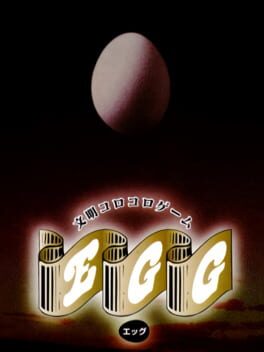
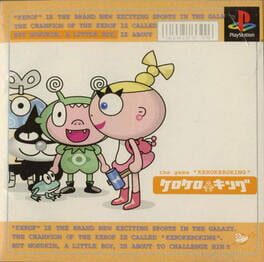
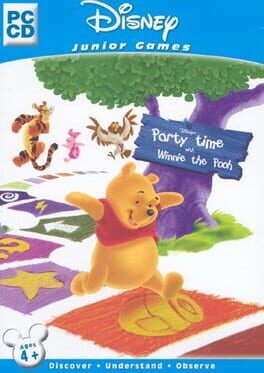
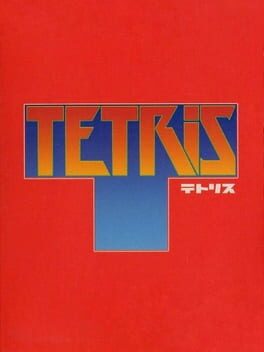

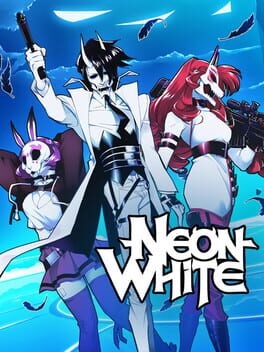
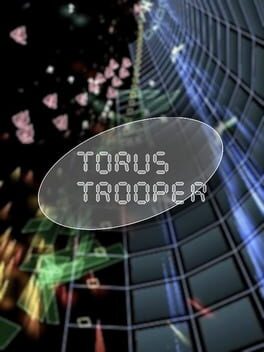
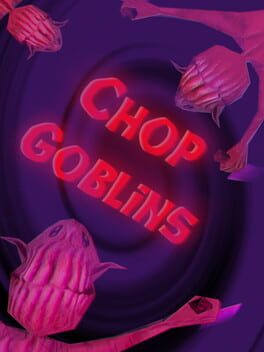
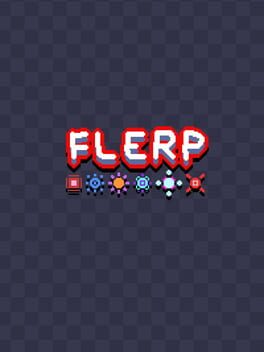
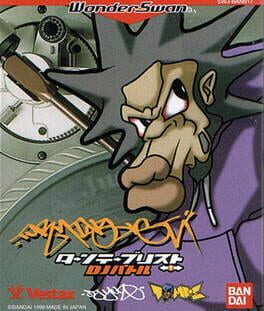
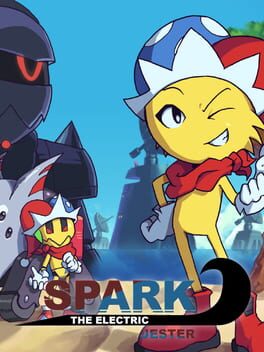
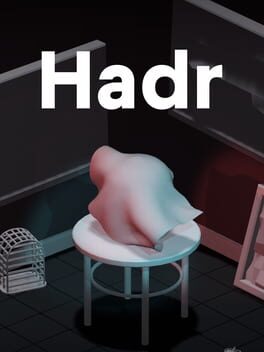
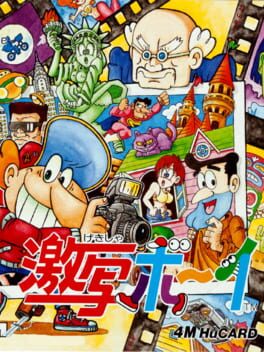
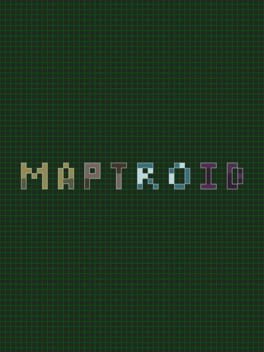
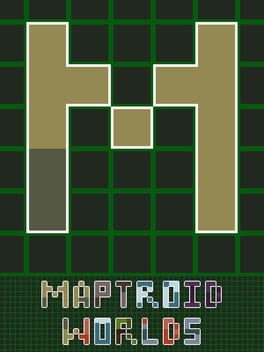

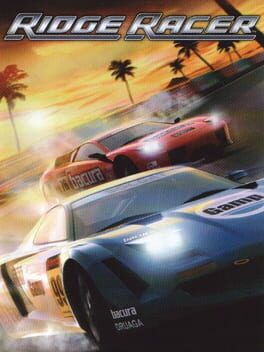
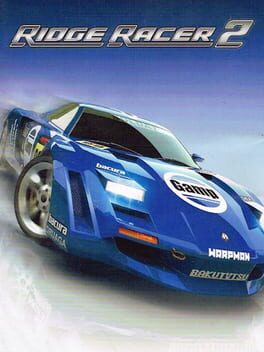

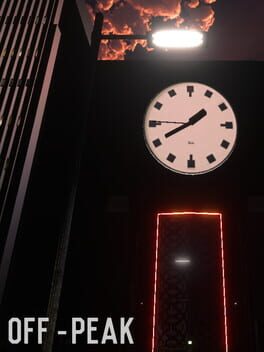

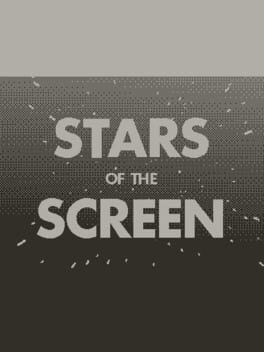
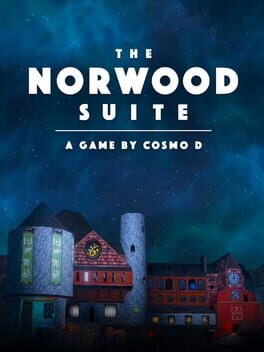


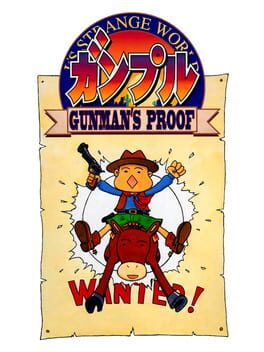



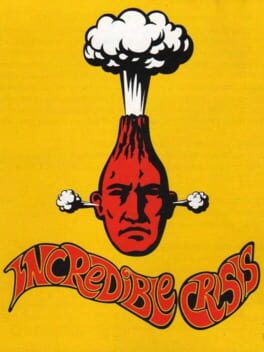
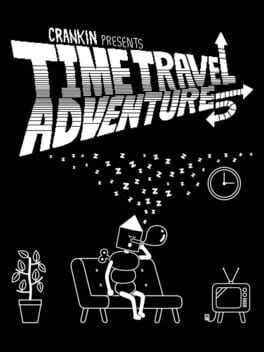


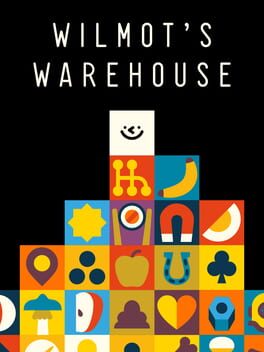
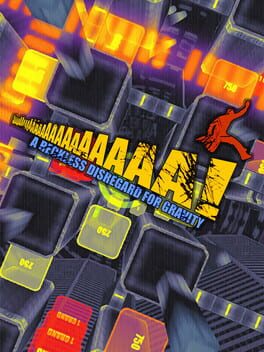
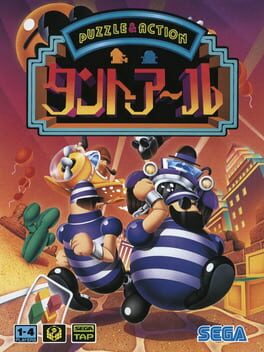

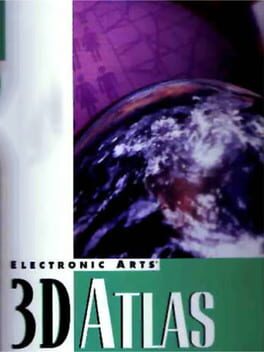
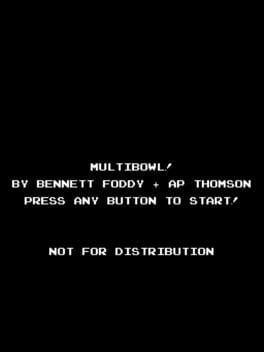
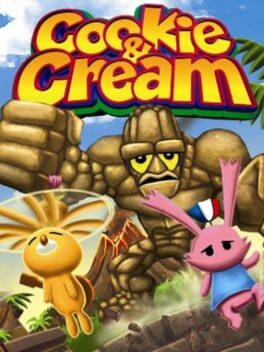
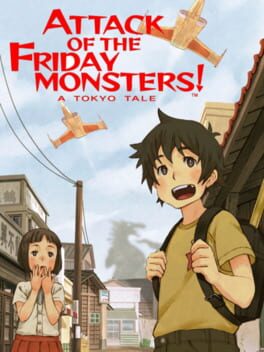

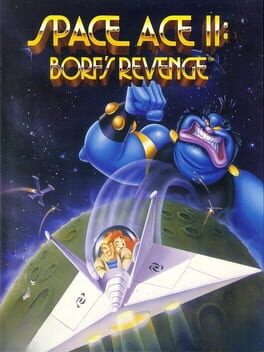
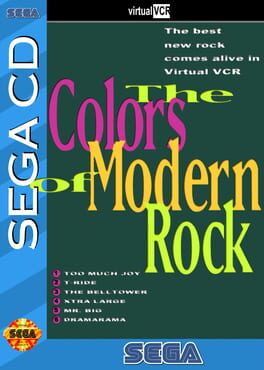



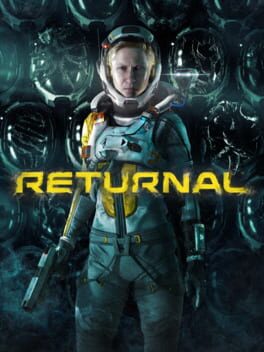

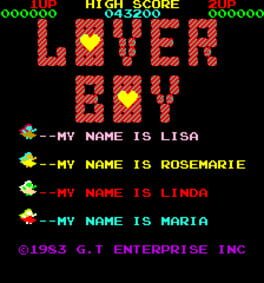
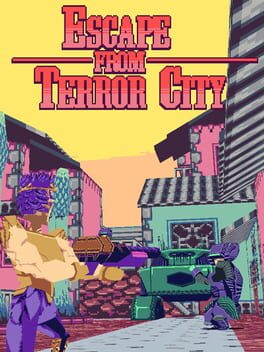
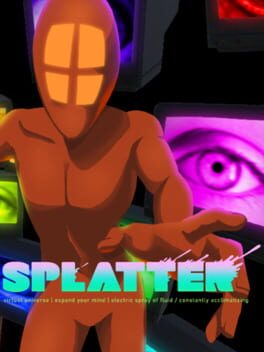
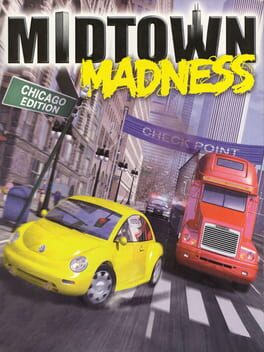
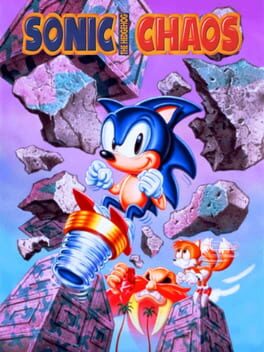
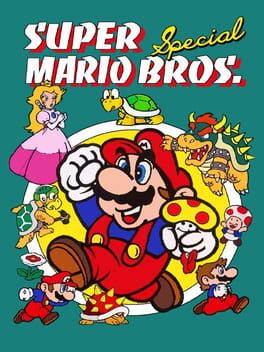


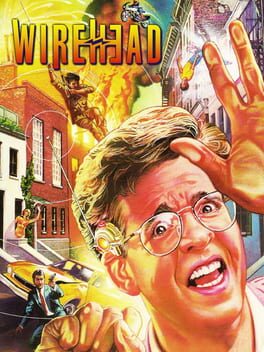
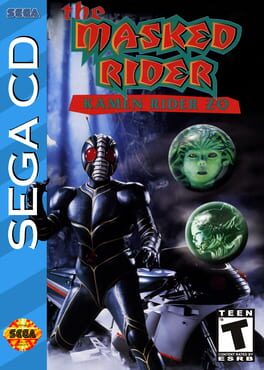
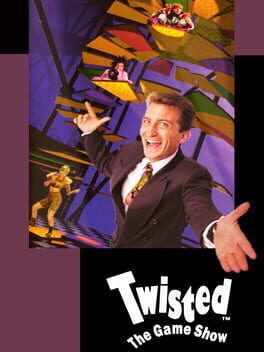
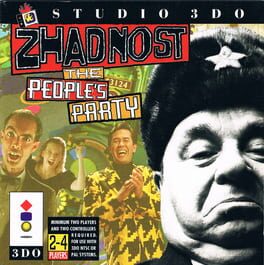
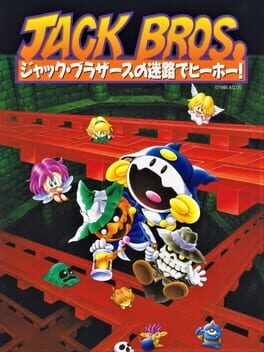
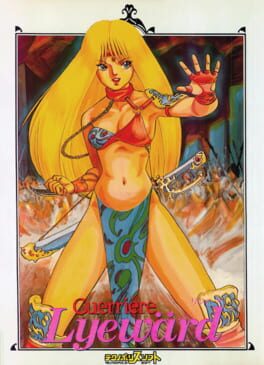
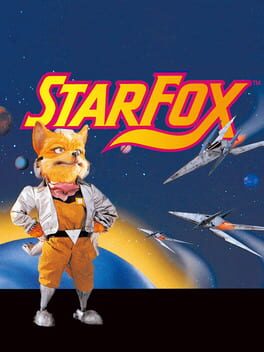

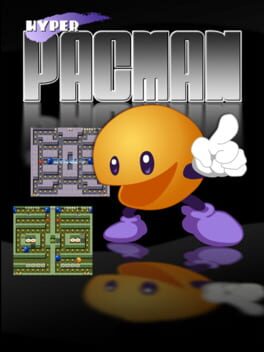


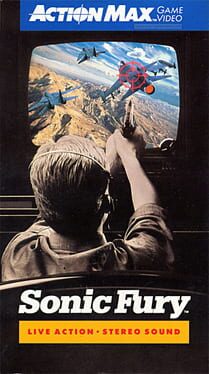
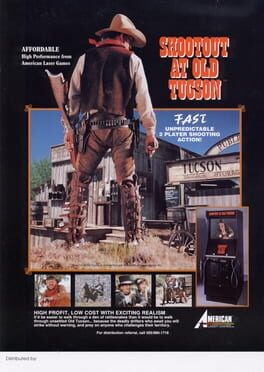

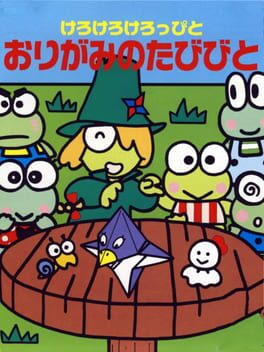
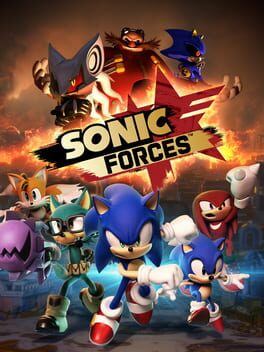
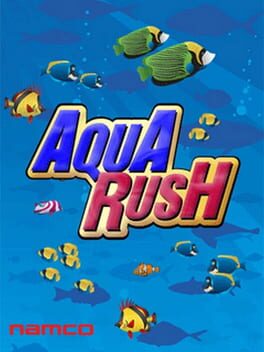
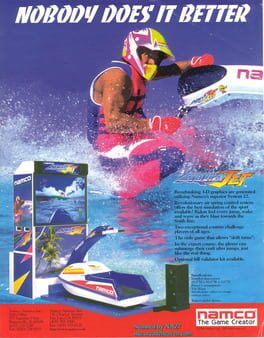
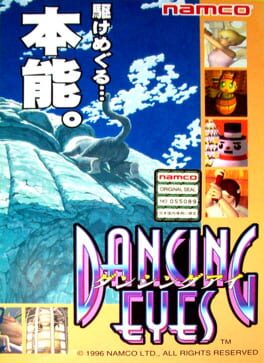





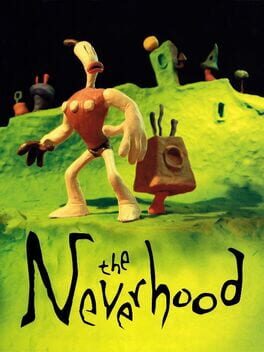
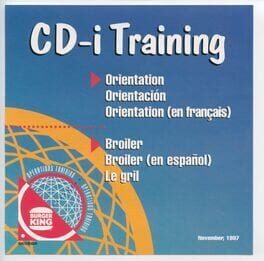
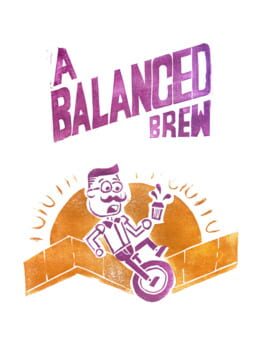
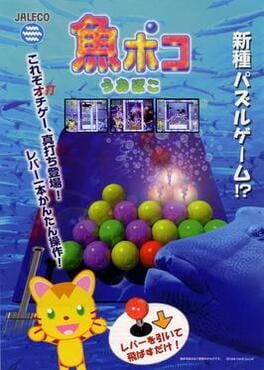
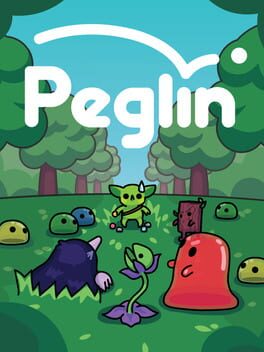
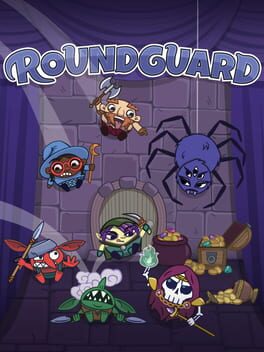
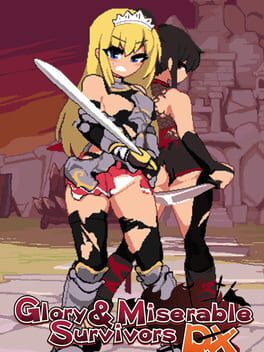
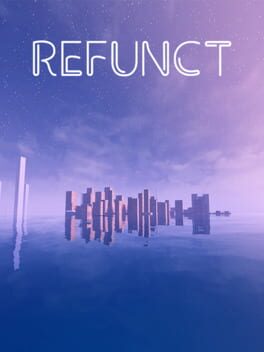
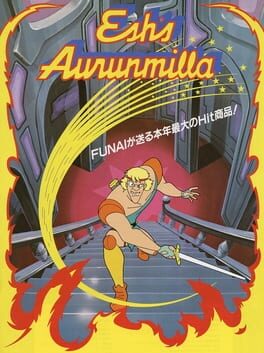

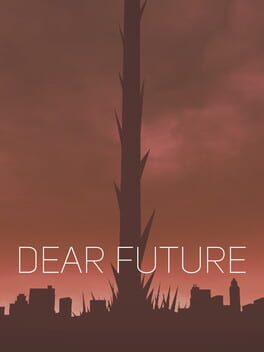





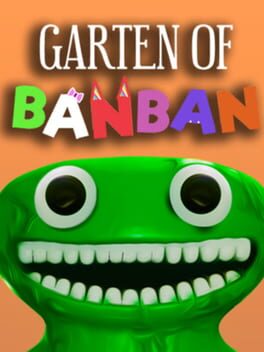
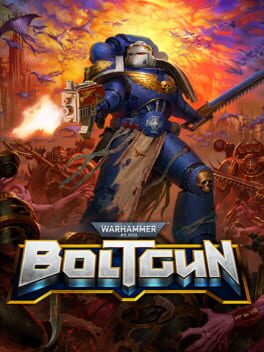
DeemonAndGames
4 months ago
For real tho I'm so glad you made this, I didn't even know you made a follow up to your 177 review so early in the year until I just saw it here, same things goes for a ton of reviews I hadn't checked out till now. Amazing year full of amazing reviews, that's something that I could say about a ton of the talented people on here (which is a lot) but your works are always a fantastic read and an inspiration for me and I'm sure also for many others. Excellent work!